In this article, we explore Grandmaster Max Dlugy’s exemplary use of prophylactic play in a high-stakes match against a 2800 Elo opponent. By examining key moments and strategies, we uncover the depth of Dlugy’s defensive and anticipatory maneuvers that led to his impressive victory.
Introduction:
Prophylactic play, a strategy focused on anticipating and preventing the opponent’s plans, is a hallmark of advanced chess. In this analysis, we delve into Grandmaster Max Dlugy’s masterful application of prophylactic techniques against a formidable 2800 Elo opponent, showcasing the strategic depth required to succeed at the highest levels of chess.
Starting the Game Against a 2800 Elo Opponent:
Facing an opponent of such high caliber, Dlugy opens with precise and calculated moves, setting the stage for a complex and engaging battle. The early stages of the game are marked by careful development and strategic pawn placements, laying the groundwork for Dlugy’s prophylactic approach.
Key Strategic Decisions and Maneuvers:
As the game progresses, Dlugy’s strategic acumen comes to the forefront. He makes key decisions that steer the game into familiar territory, allowing him to leverage his deep understanding of prophylactic play. Through subtle maneuvers, he aims to restrict his opponent’s activity and preempt potential threats.
Defensive Play and Gaining Time Advantage:
Dlugy’s defensive play is characterized by his ability to foresee and neutralize the opponent’s plans. By carefully positioning his pieces and creating a solid defensive structure, he forces his opponent to overextend, gaining a crucial time advantage. This phase of the game highlights Dlugy’s capacity to balance defense and counterattack, maintaining control over the board.
Final Moves and Victory:
In the concluding phase, Dlugy’s strategic groundwork pays off. He capitalizes on the weaknesses created through his opponent’s overextension and executes precise tactical combinations. The final moves are a testament to his comprehensive understanding of prophylactic play, culminating in a well-deserved victory.
Conclusion:
Through this detailed analysis, we witness Grandmaster Max Dlugy’s prowess in prophylactic play, particularly against a highly skilled 2800 Elo opponent. His ability to anticipate and counter his opponent’s strategies with defensive precision showcases the importance of foresight and strategic planning in chess. Join us in exploring the key moments and strategic decisions that led to this remarkable triumph, and gain deeper insights into the sophisticated world of prophylactic chess.
Detailed Instructions are given below:
1. In the previous article, we learned about all the concepts of ranks, files, rules of castling and all the moving directions of pieces. Let’s play another game. The white pawn is moved from “e2” to “e4” square. Then, the black pawn is shifted from “g7” to “g6” square. In the next move, the white pieces player displaced another white pawn from “d2” to “d4” square. The black bishop is repositioned diagonally from “f8” to “g7” square.
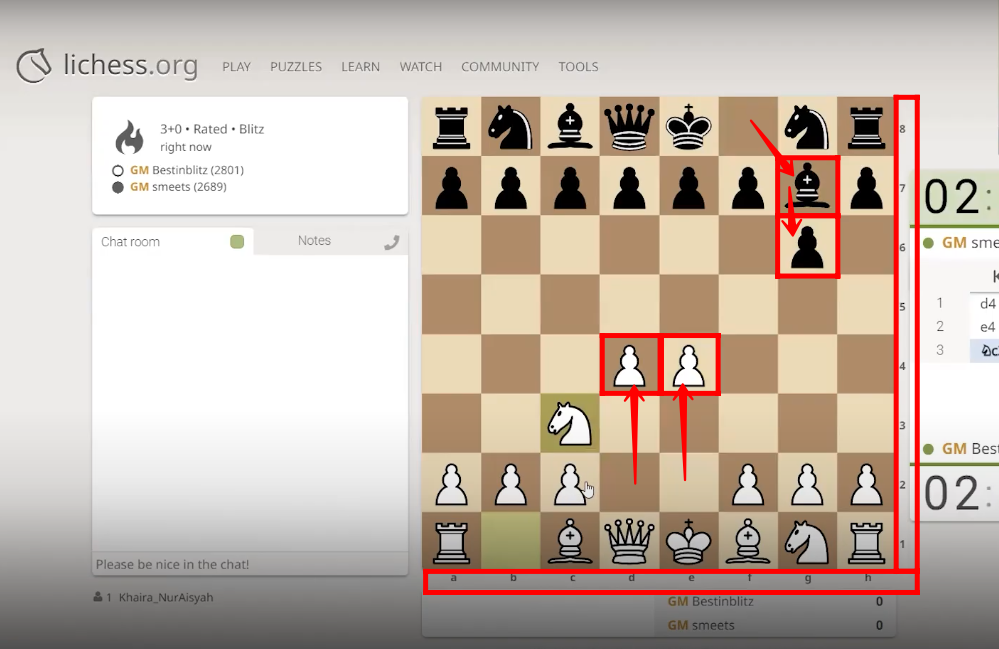
2. The white knight moved in “L” shape from “b1” to “c3” square.

3. The black pawn is transferred from “a7” to “a6” square.
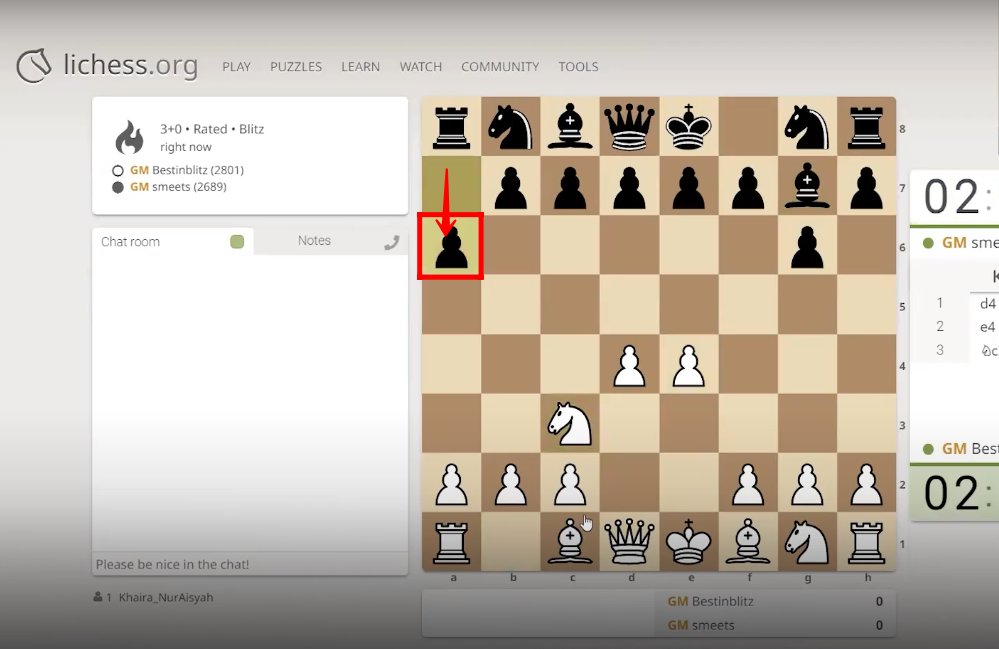
4. The white pawn is moved two steps forward from “a2” to “a4” square.
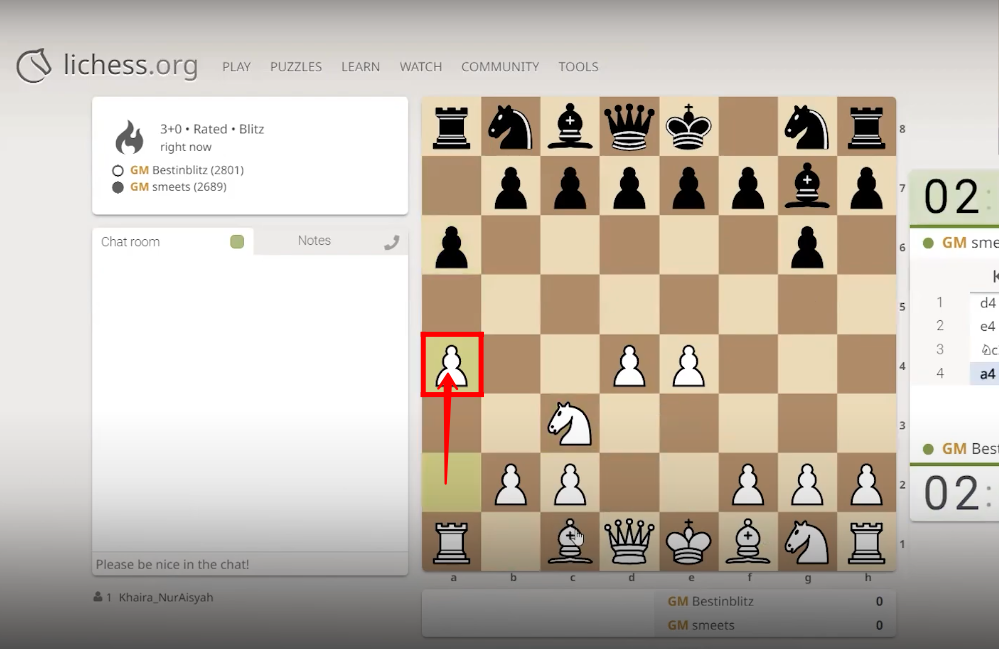
5. The black pawn is relocated from “d7” to “d6” square.
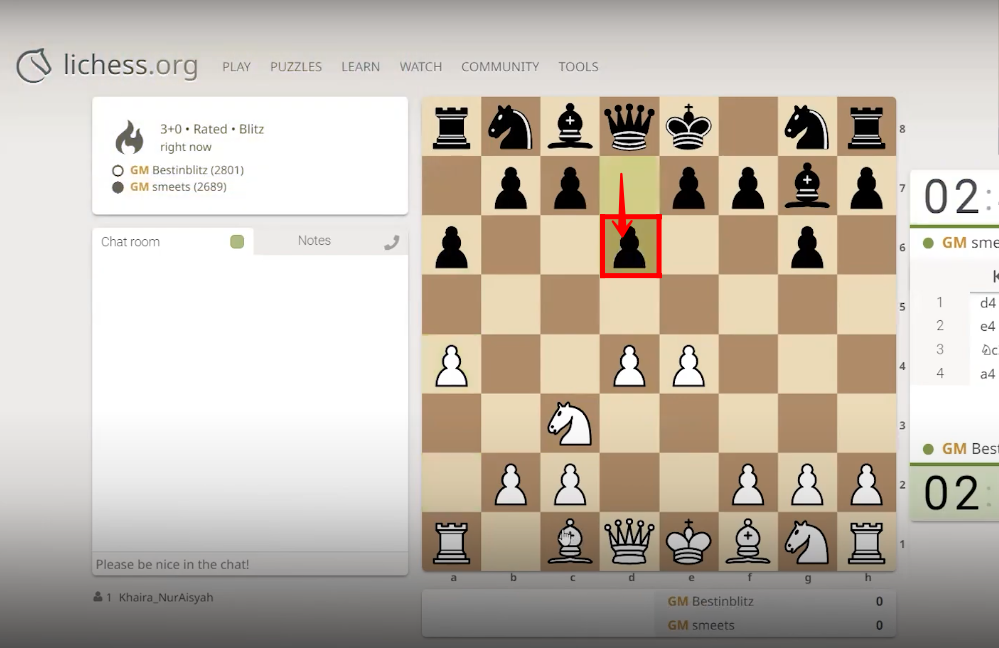
6. The white bishop is repositioned diagonally from “c1” to “e3” square.

7. The black knight is displaced from “g8” to “f6” square in “L” shape.

8. The white queen is repositioned from “d1” to “d2” square.
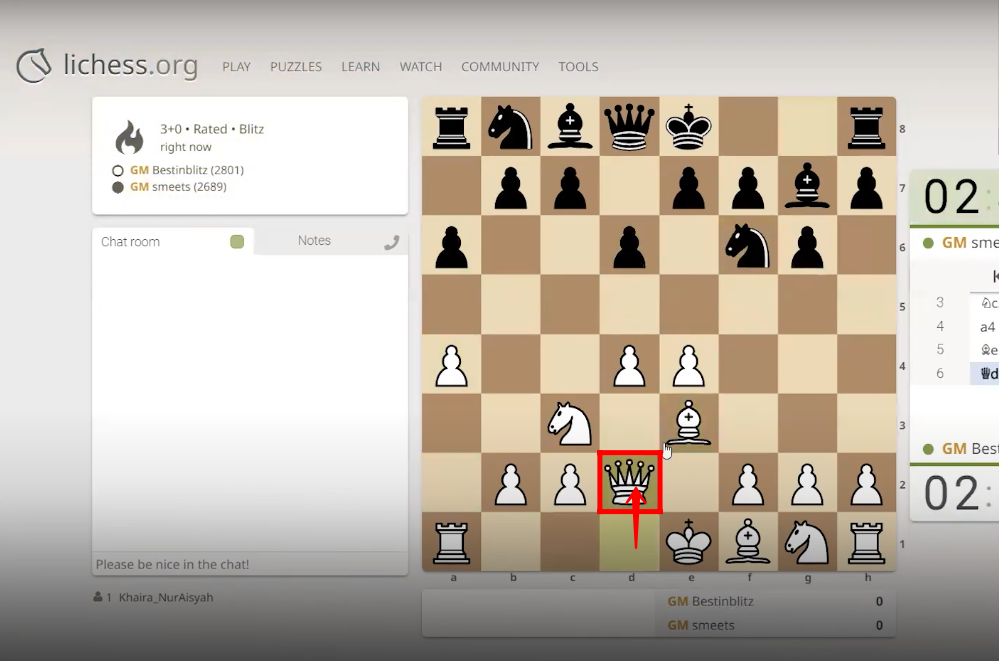
9. The black knight is shifted in “L” shifted from “f6” to “g4” square.

10. The white bishop is displaced diagonally from “e3” to “g5” square.
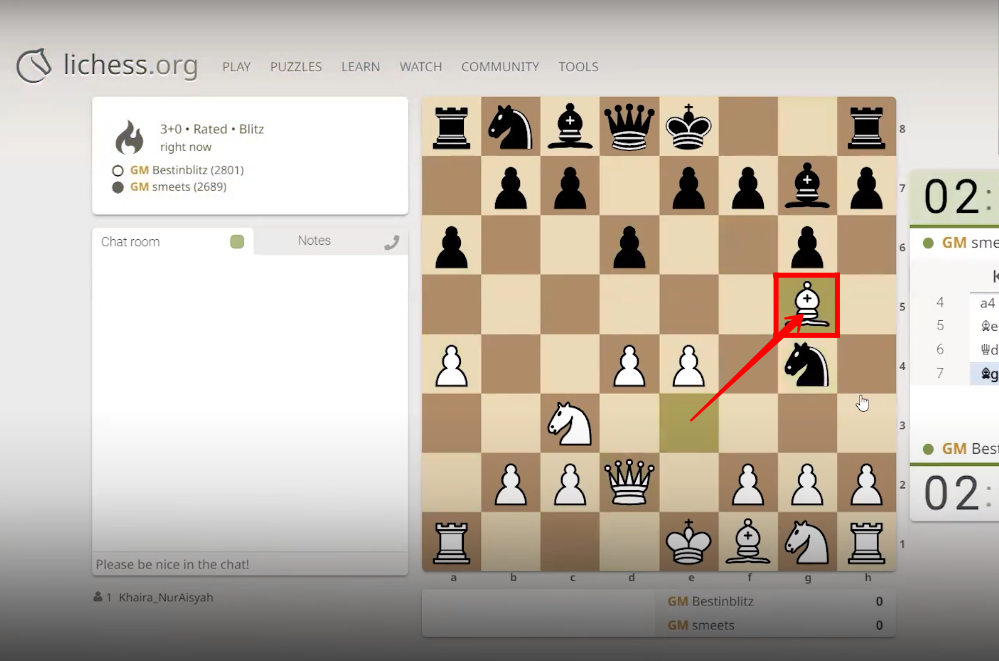
11. The black pawn is moved forward from “h7” to “h6” square.
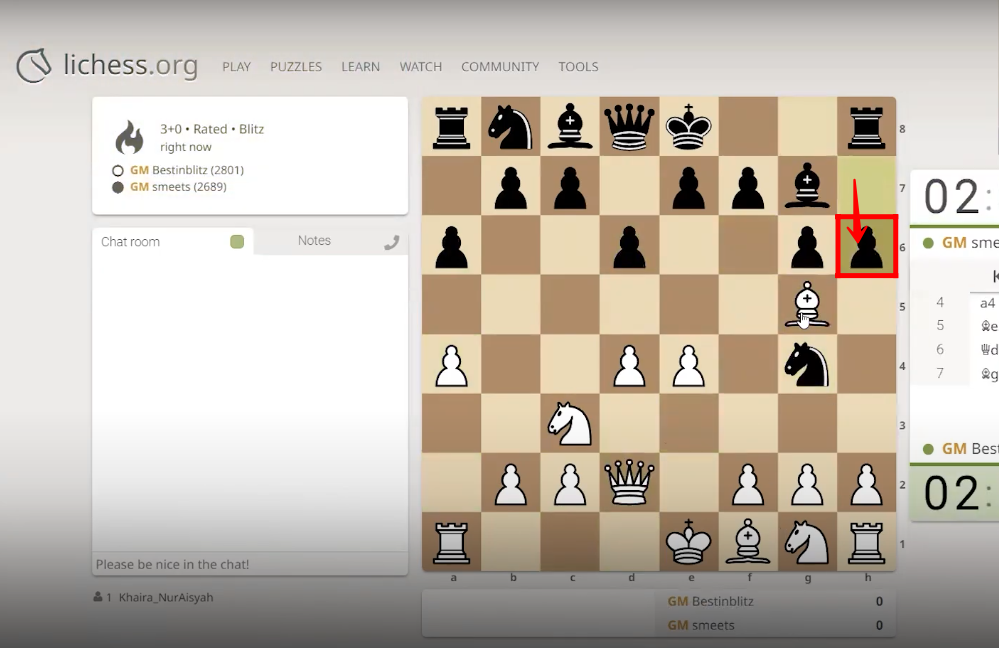
12. The white bishop is shifted diagonally from “g5” to “h4” square.

13. The black pawn is repositioned from “b7” to “b6” square.
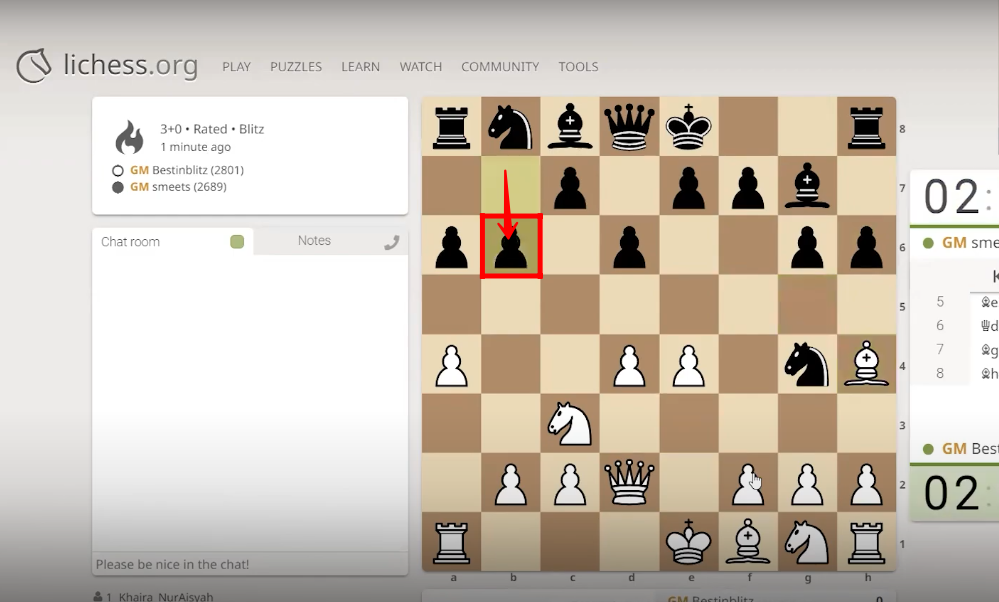
14. The white pawn is moved from “f2” to “f3” square.
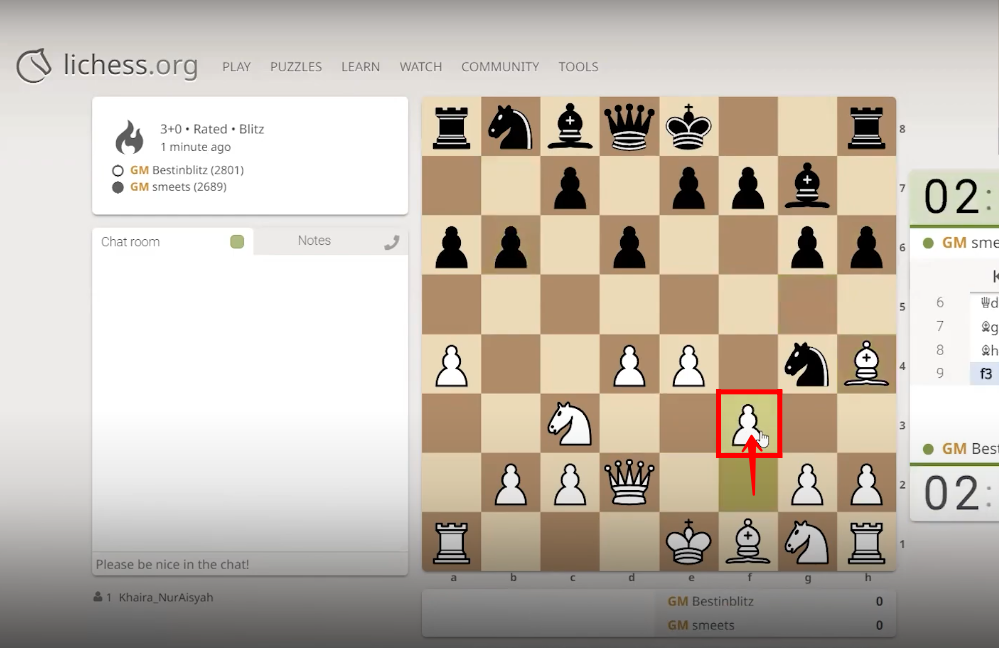
15. The black knight moved backward again from “g4” to “f6” square.
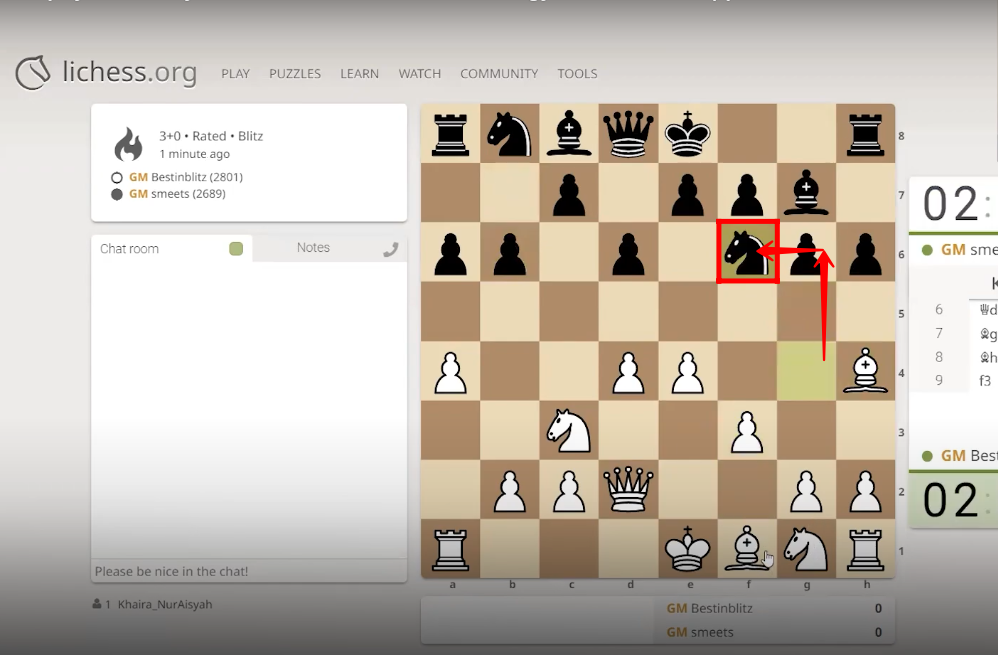
16. The white bishop is displaced diagonally from “h4” to “f2” square.
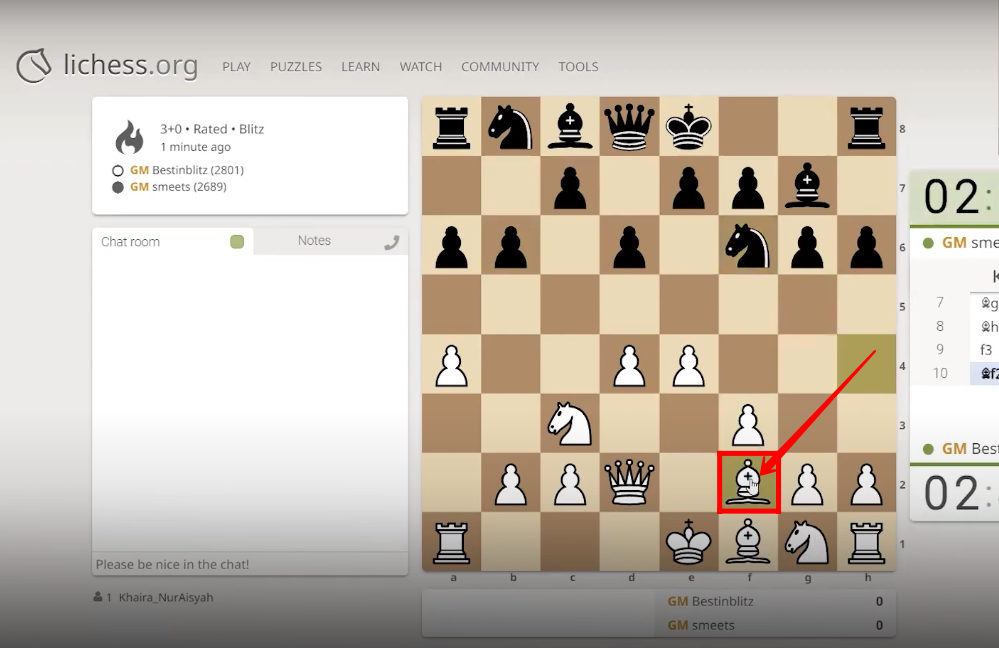
17. The black pawn is relocated two steps forward from “c7” to “c5” square.

18. The white knight is transferred from “g1” to “e2” square in “L” shape.
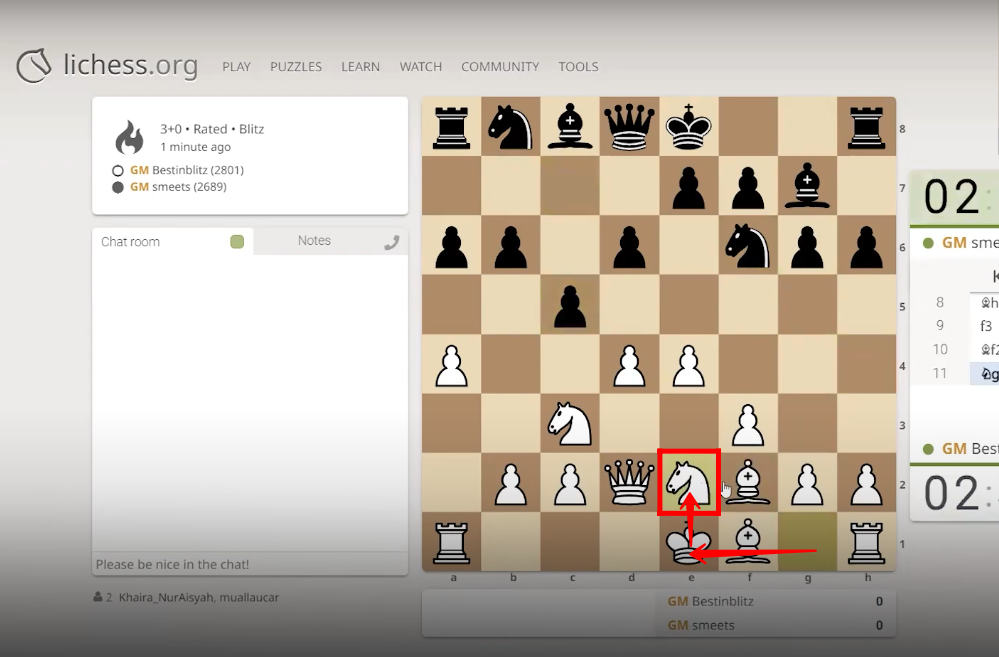
19. The black knight is repositioned from in “L” shape from “b8” to “c6” square.
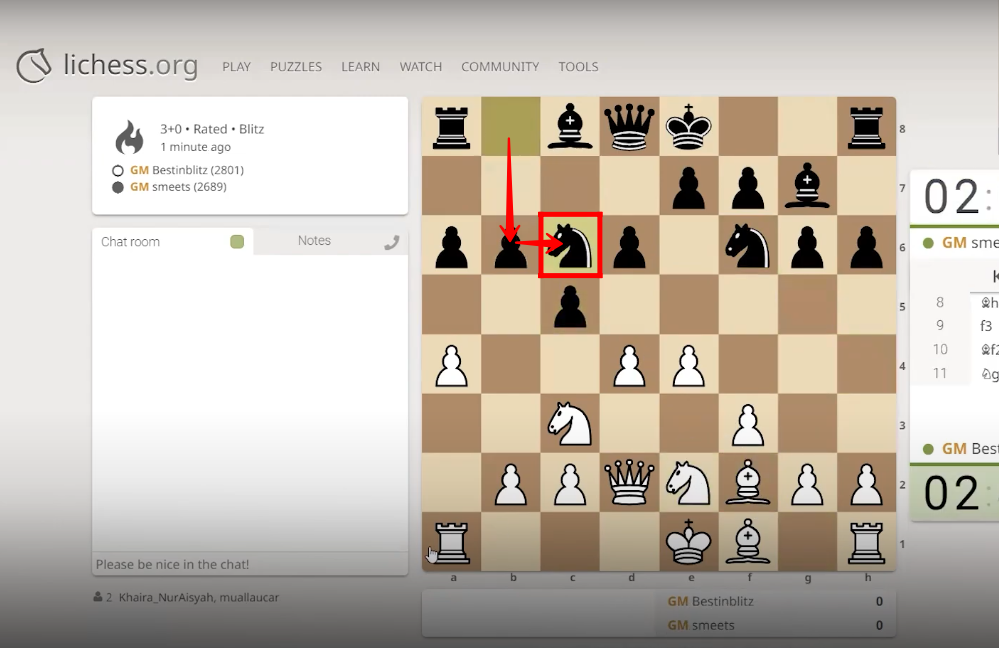
20. The white hook is moved from “a1” to “d1” square horizontally.

21. The black queen is shifted diagonally from “d8” to “c7” square.

22. The white pawn is repositioned from “d4” to “d5” square.
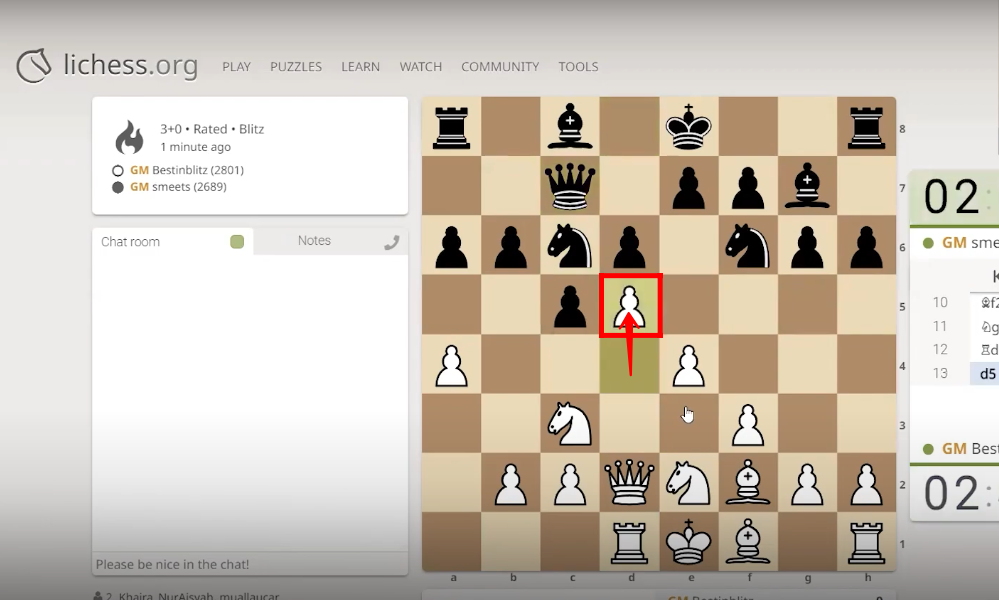
23. The black knight is relocated from “c6” to “e5” square in “L” shape.
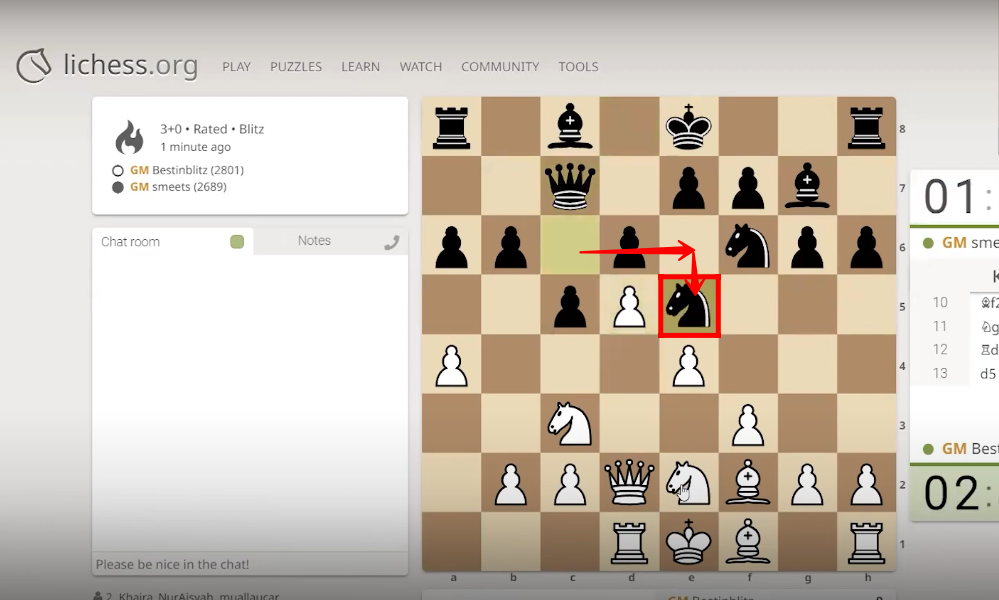
24. The white knight is relocated in “L” shape from “e2” to “g3” square.
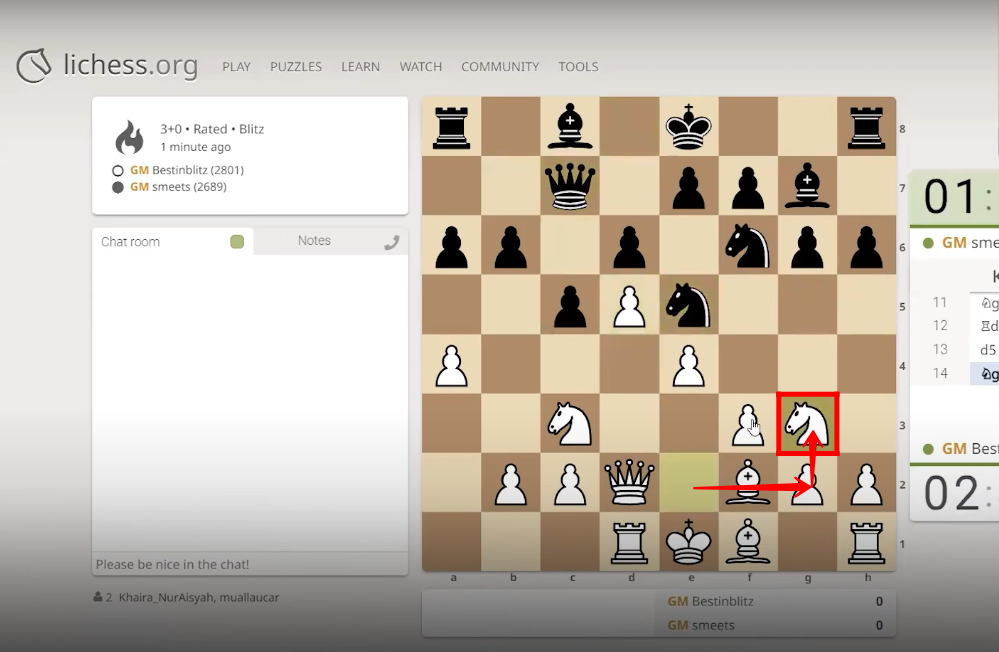
25. The black pawn is moved from “h6” to h5” square.
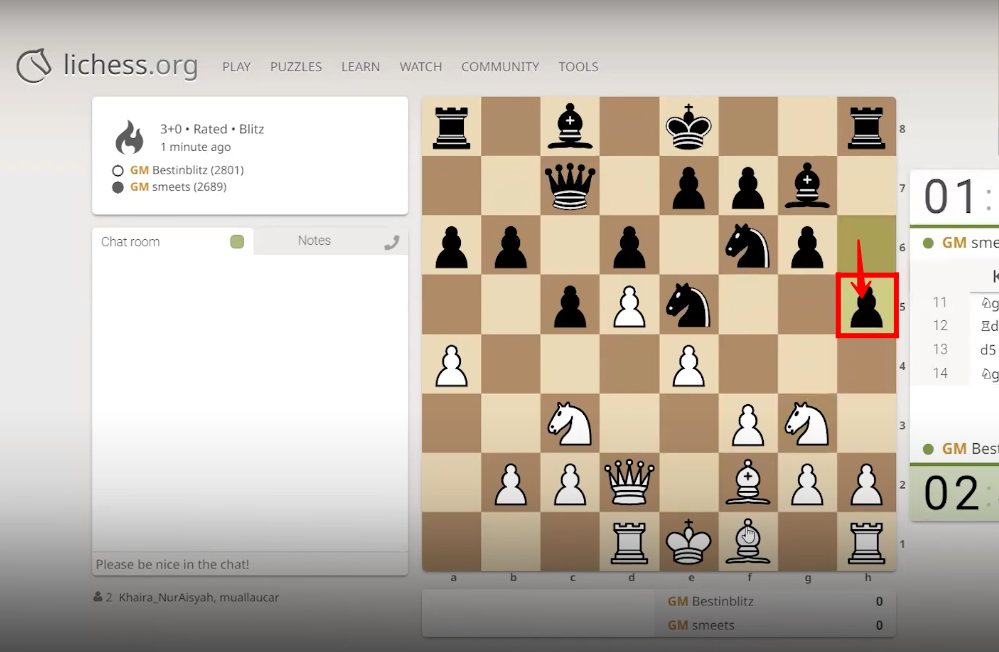
26. The white bishop is shifted diagonally from “f1” to “e2” square.

27. The black pawn is repositioned from “h5” to “h4” square.
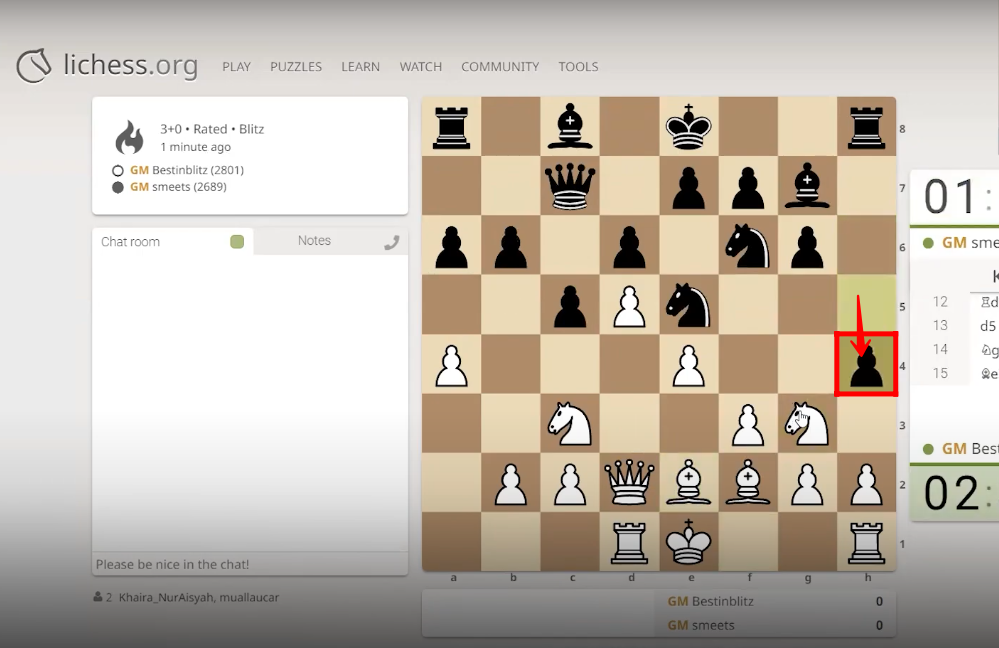
28. The white knight is relocated backward from “g3” to “f1” square in “L” shape.
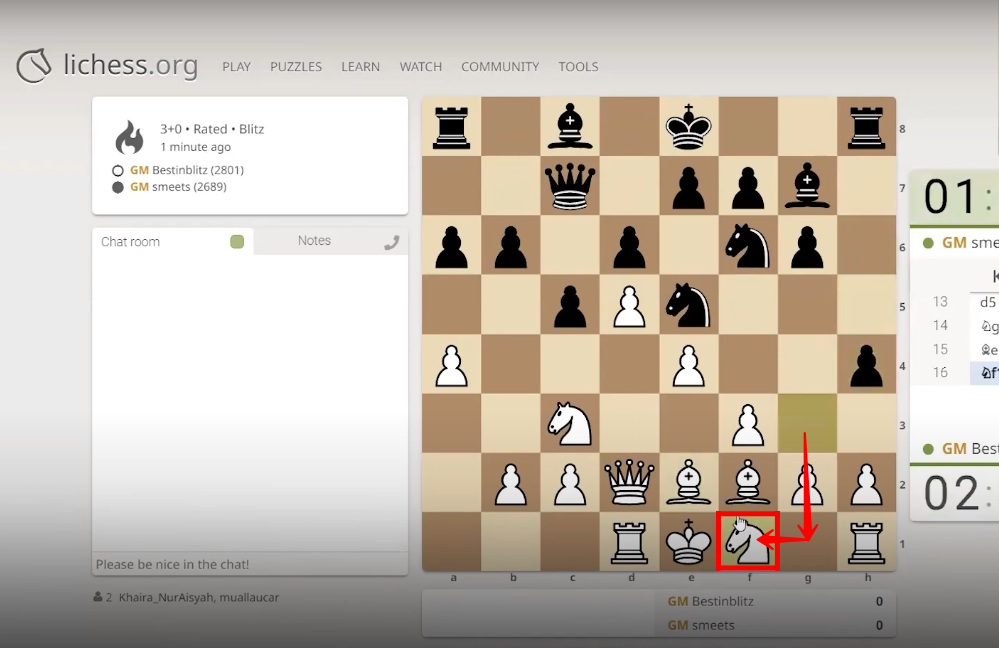
29. The black hook is moved from “a8” to “b8” square horizontally.

30. The white pawn is displaced from “h2” to “h3” square.
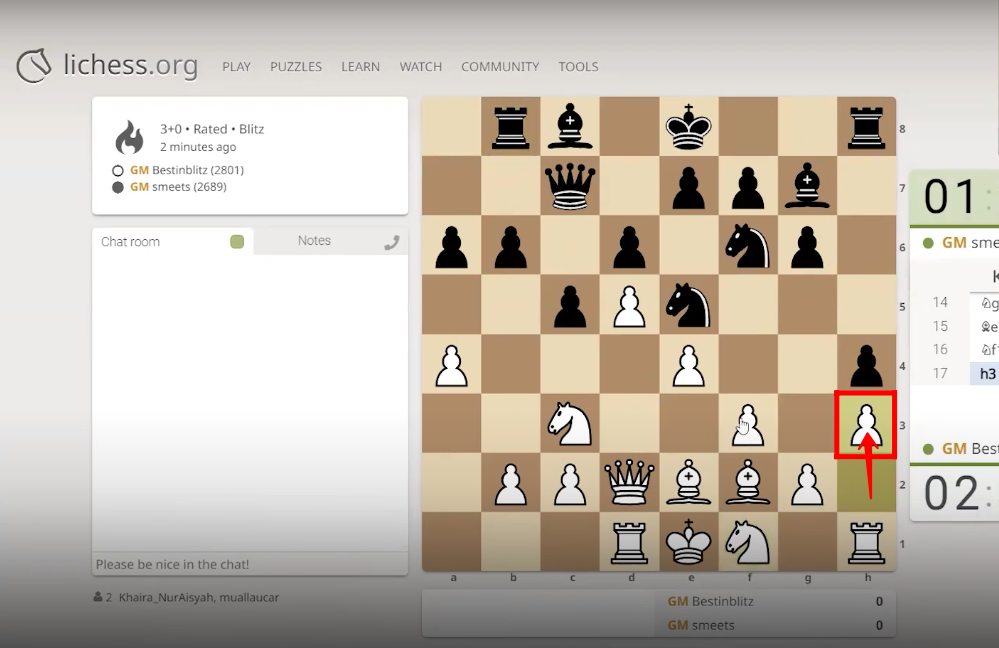
31. The black knight is transferred from “f6” to “h5” square in “L” shape.

32. The white pawn is relocated from “f3” to “f4” square.
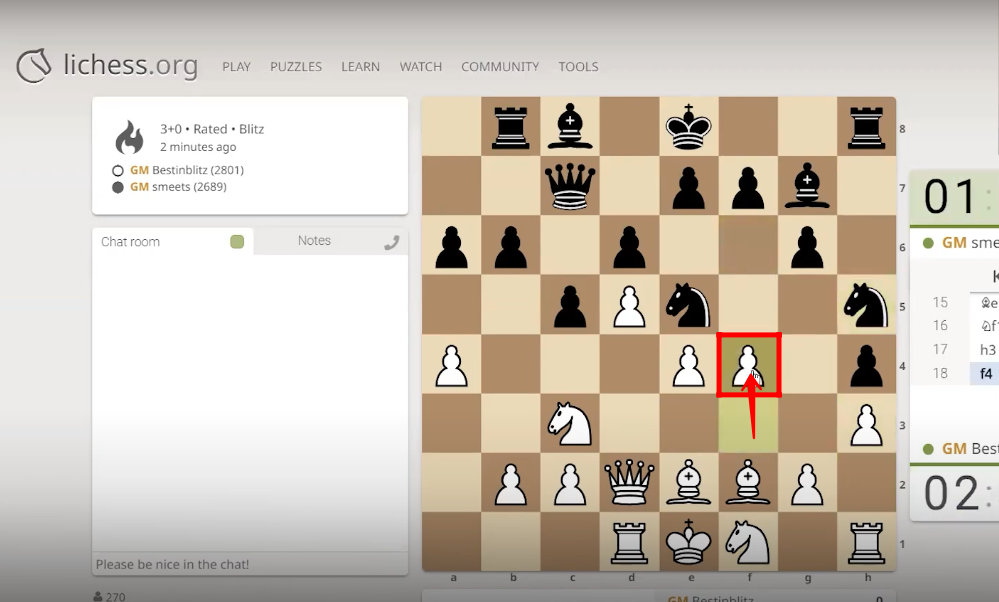
33. The black bishop is moved diagonally from “g7” to “h6” square.
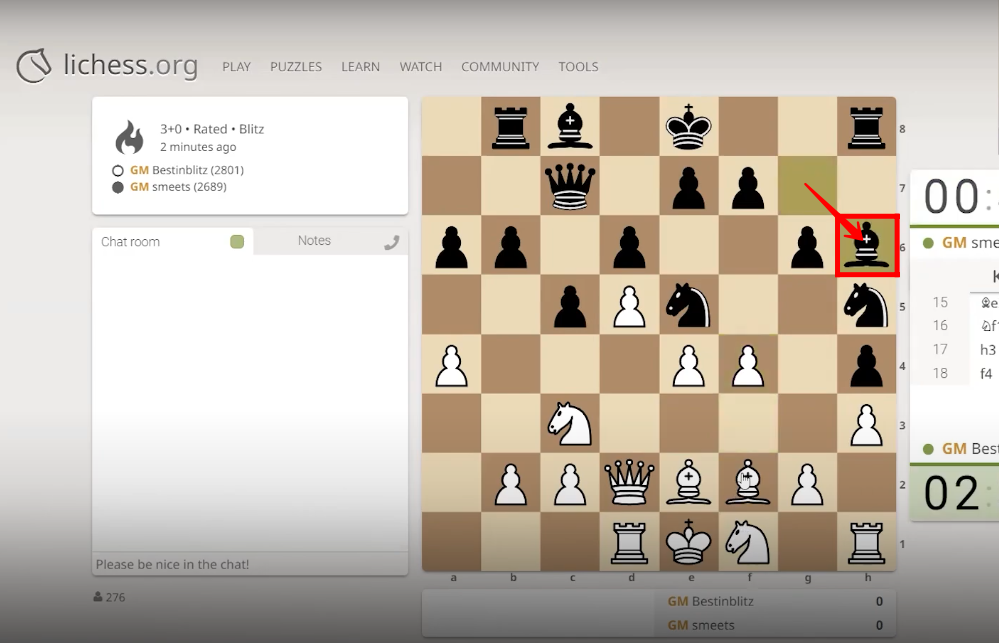
34. The white bishop is shifted diagonally from “e2” to “h5” square and captures the black knight.
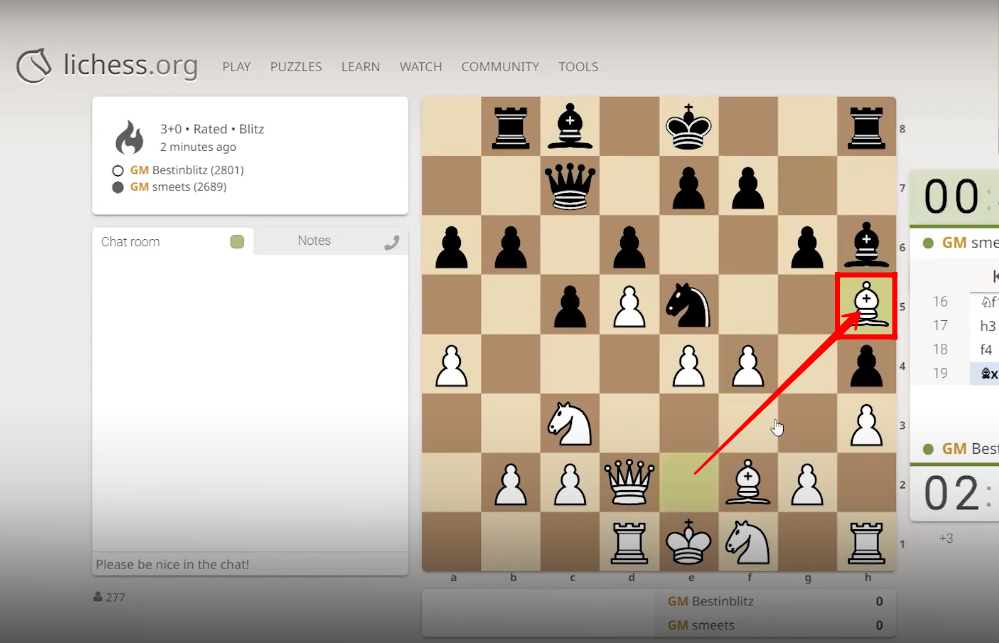
35. The black pawn is moved diagonally from “g6” to “h5” square and captures the white bishop.

36. The white pawn is moved forward from “b2” to “b3” square.

37. The black knight is displaced in “L” shape from “e5” to “g6” square.
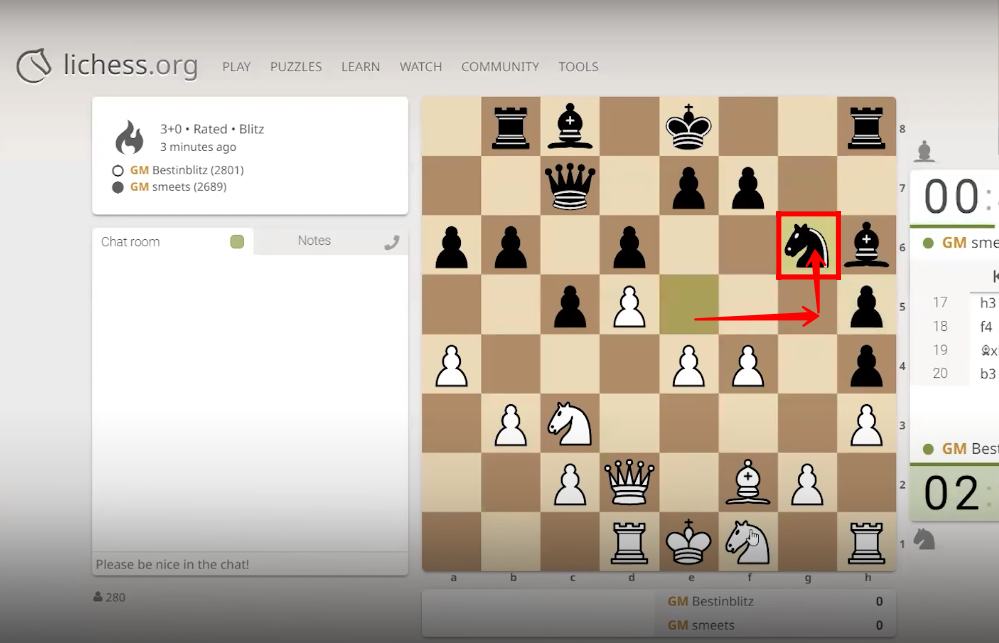
38. The white bishop is relocated diagonally from “f2” to “e3” square.

39. The black pawn is repositioned forward from “f7” to “f5” square.
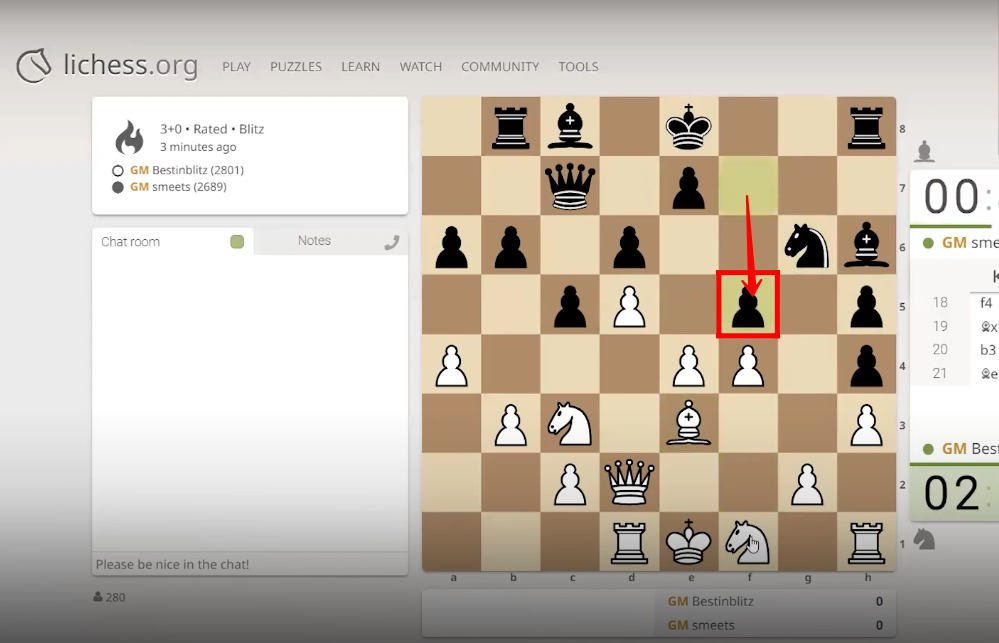
40. The white knight is shifted in “L” shape from “f1” to “h2” square.

41. The black pawn is moved one square forward from “b6” to “b5” square.

42. The white pawn is displaced diagonally from “a4” to “b5” square and captures the black pawn.

43. The black pawn is displaced diagonally from “a6” to “b5” square and captures the white pawn.

44. Now, the white king and the white hook are in pure castling condition.
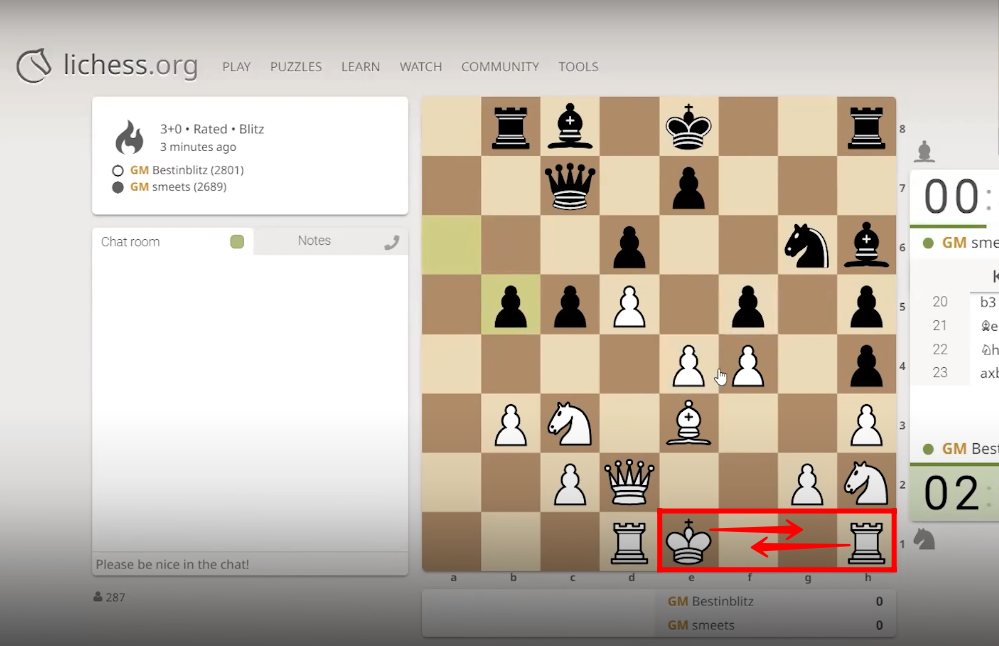
45. By applying the castling rule, the white king and the white hook over-crossed each other. The white king moved from “e1” to “g1” square and the white hook moved from “h1” to “f1” square.
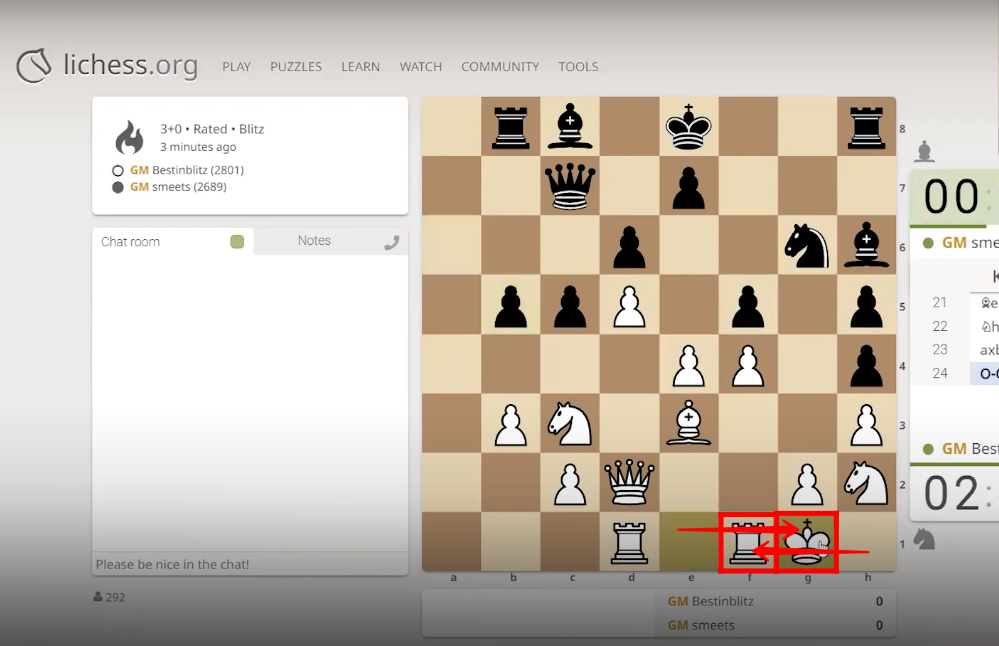
46. The black pawn is shifted forward from “b5” to “b4” square.
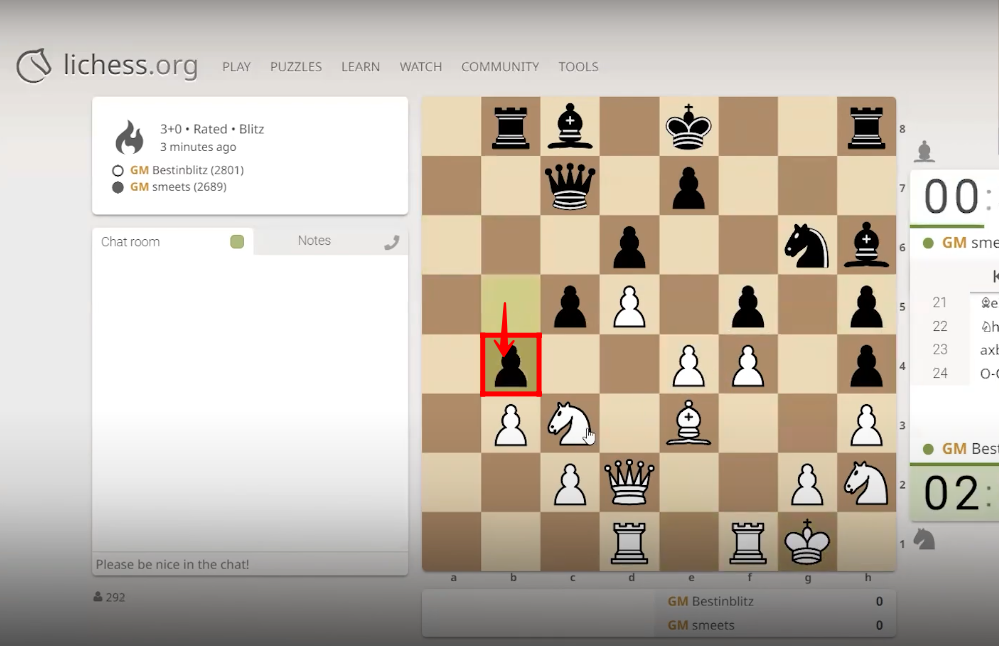
47. The white knight is displaced in “L” shape from “c3” to “a4” square.

48. The black hook is relocated from “h8” to “g8” square horizontally.
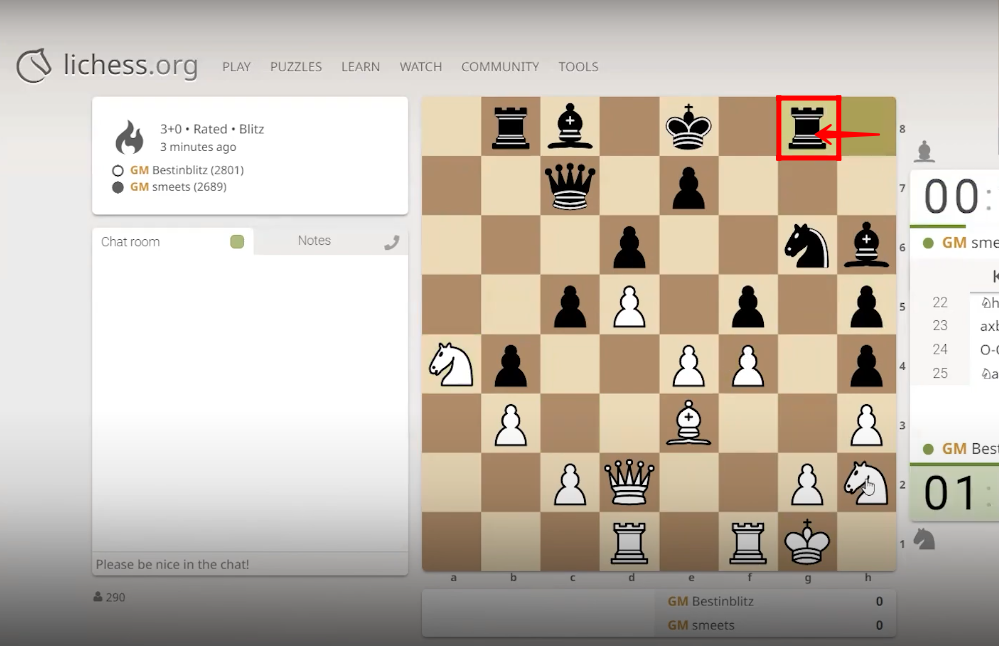
49. The white pawn is repositioned from “e4” to “e5” square.
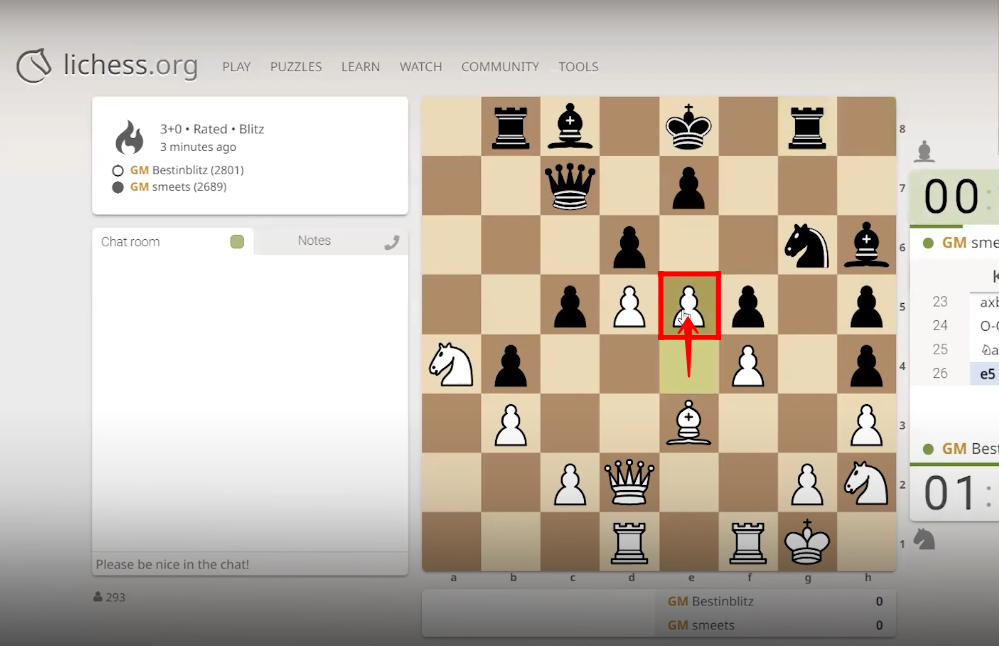
50. The black pawn is displaced diagonally from “d6” to “e5” square and captures the white pawn.
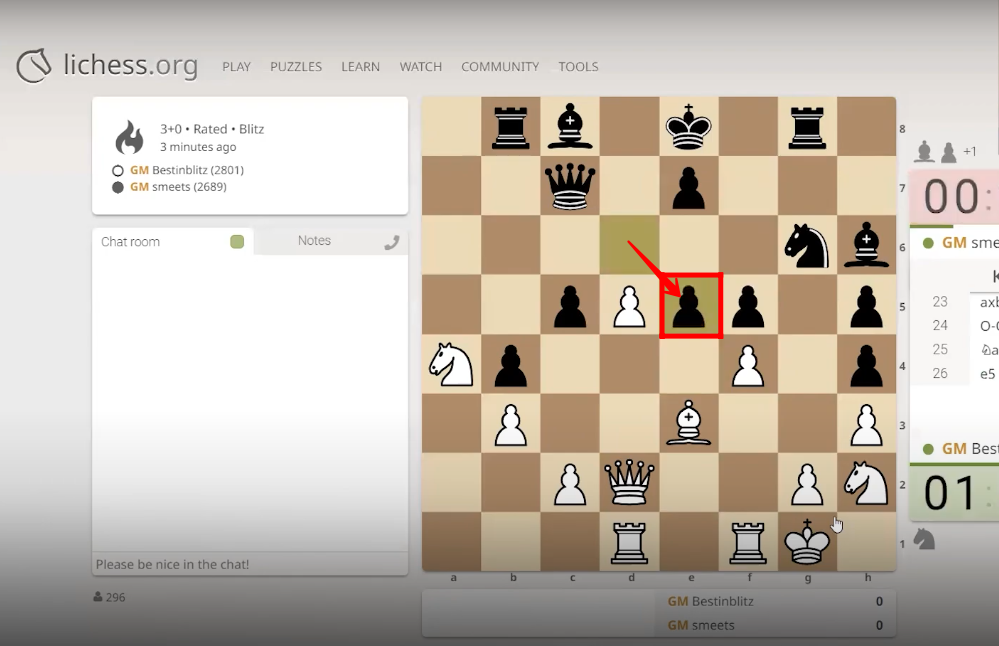
51. The white pawn is relocated diagonally from “f4” to “e5” square and captures the black pawn.
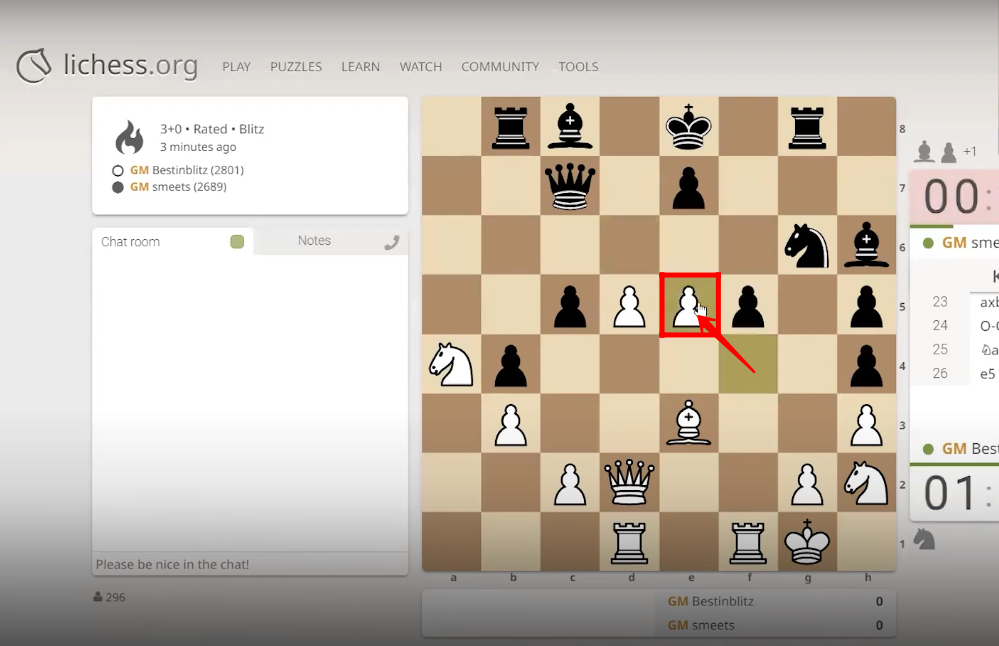
52. The black bishop is repositioned diagonally from “h6” to “e3” square and captures the white bishop.

53. The white queen is shifted diagonally from “d2” to “e3” square and captures the black bishop.
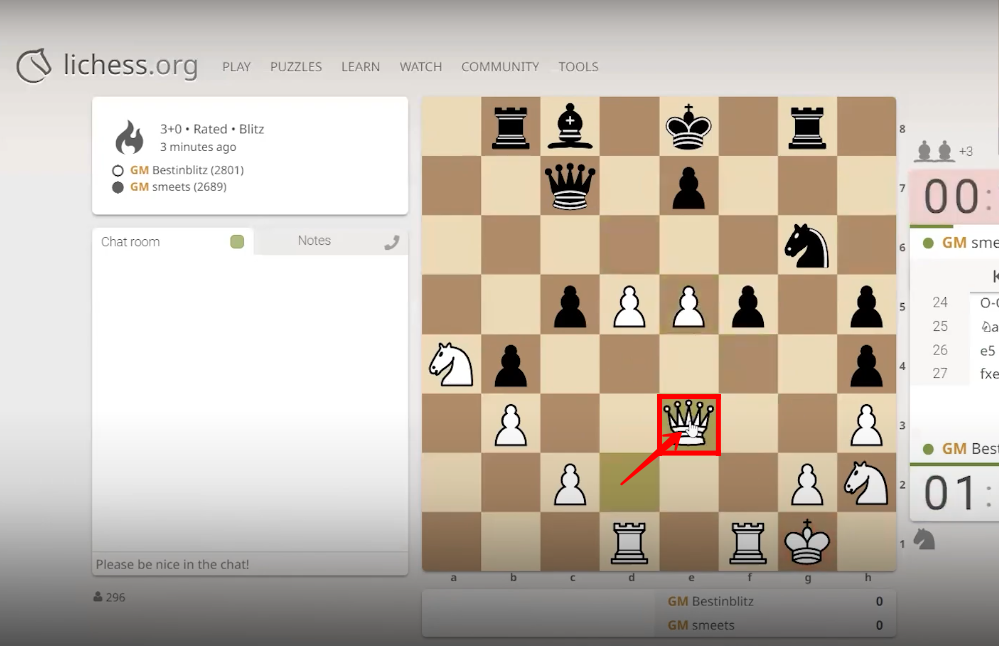
54. The black queen is moved diagonally from “c7” to “e5” square and captures the white pawn.
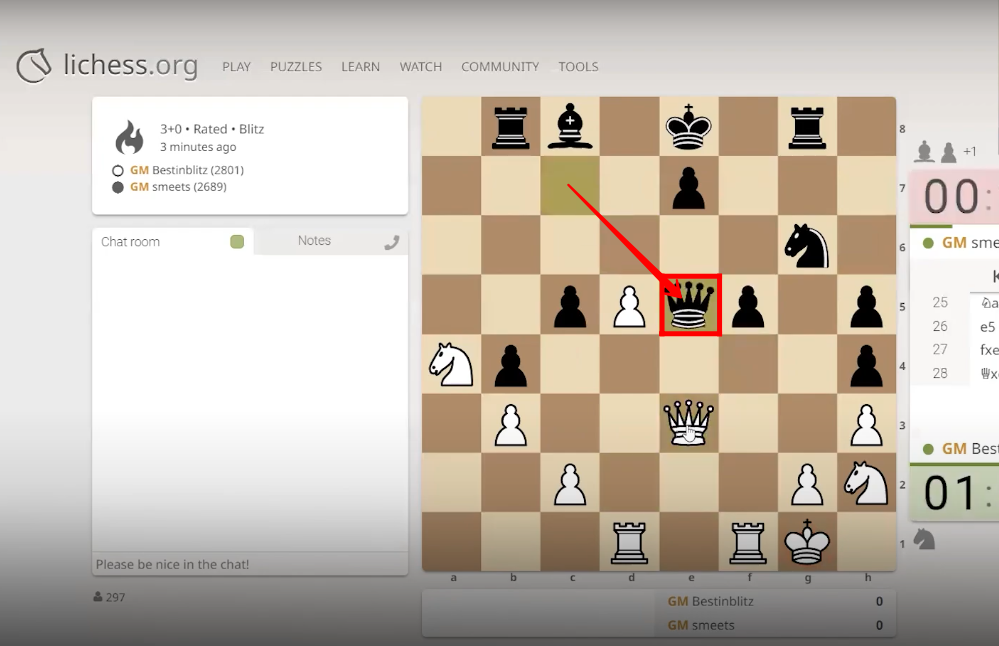
55. The white queen captures the black queen by moving from “e3” to “e5” square.
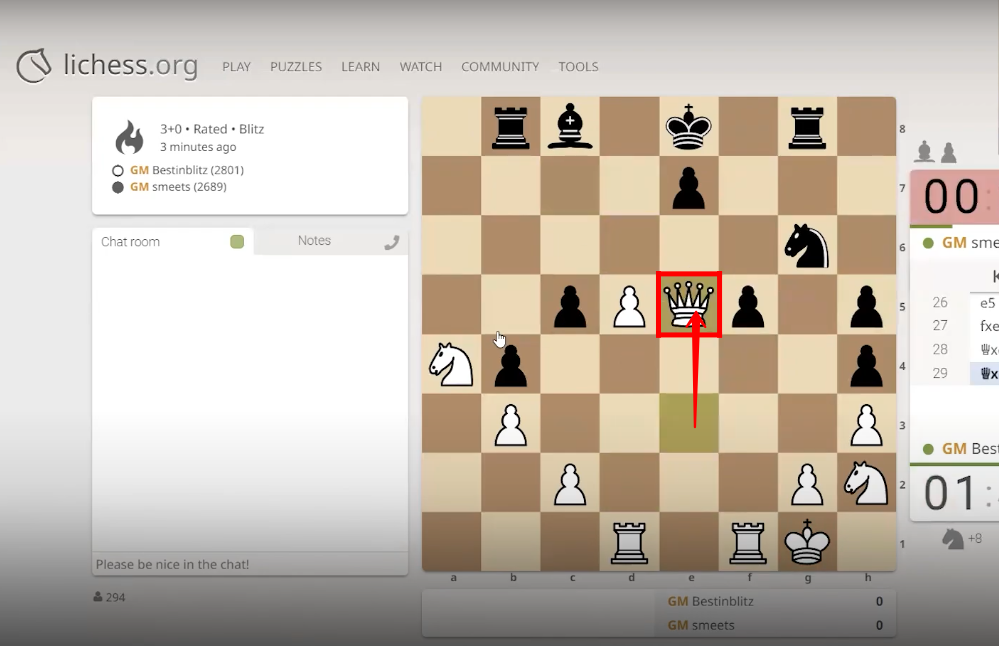
56. The black knight is displaced in “L” shape from “g6” to “e5” square and captures the white queen.
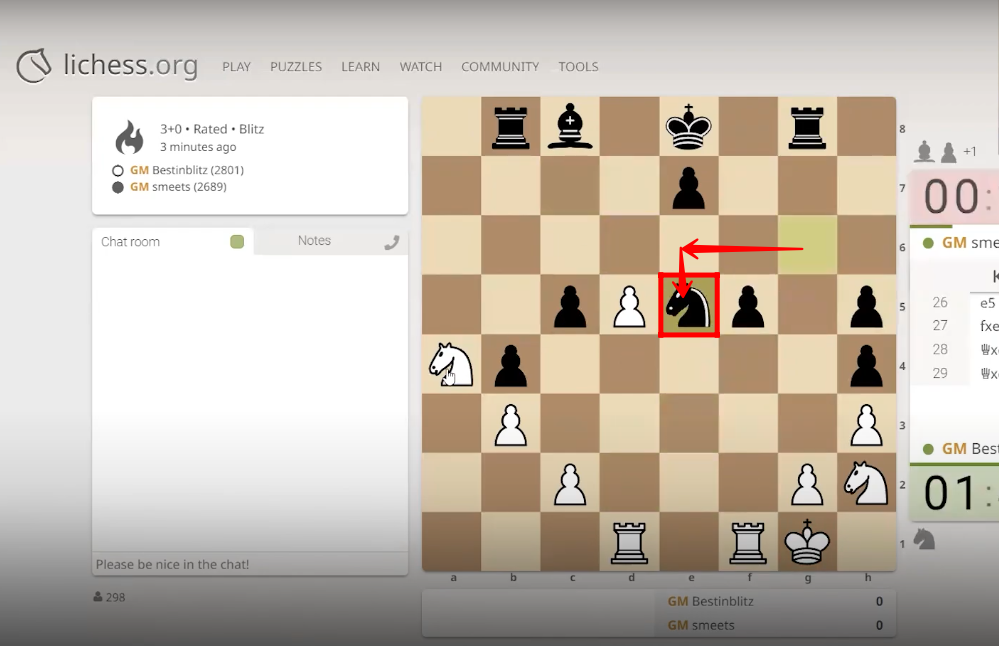
57. The white knight is relocated in “L” shape from “a4” to “c5” square and captures the black pawn.

58. The black hook is shifted from “b8” to “b5” square.
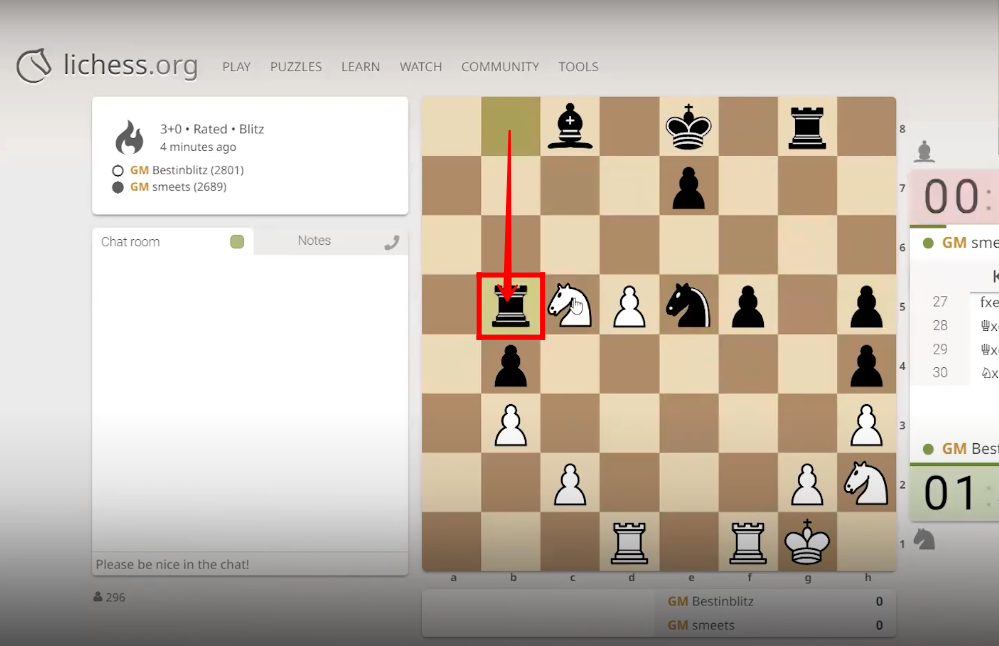
59. The white knight is repositioned from “c5” to “e6” square in “L” shape.
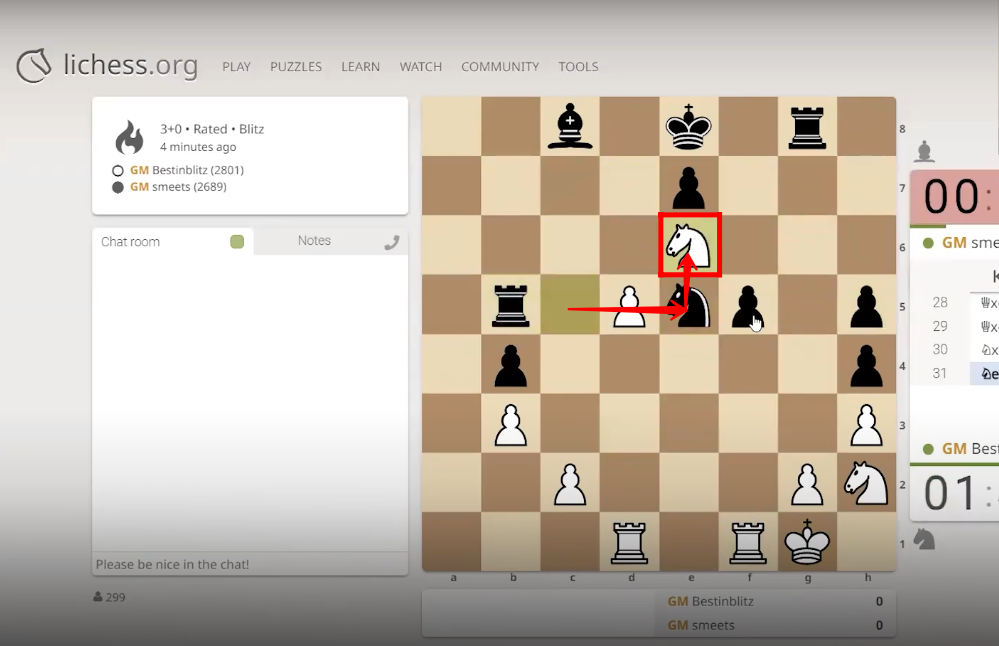
60. The black bishop is displaced diagonally from “c8” to “e6” square and captures the white knight.
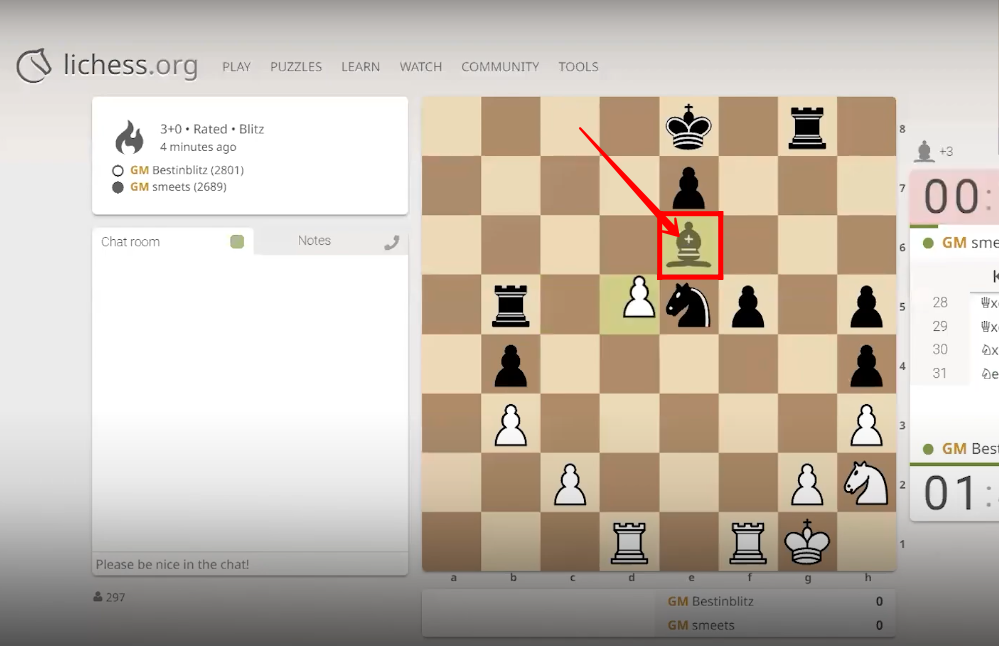
61. The white pawn is displaced diagonally from “d5” to “e6” square and captures the black bishop.
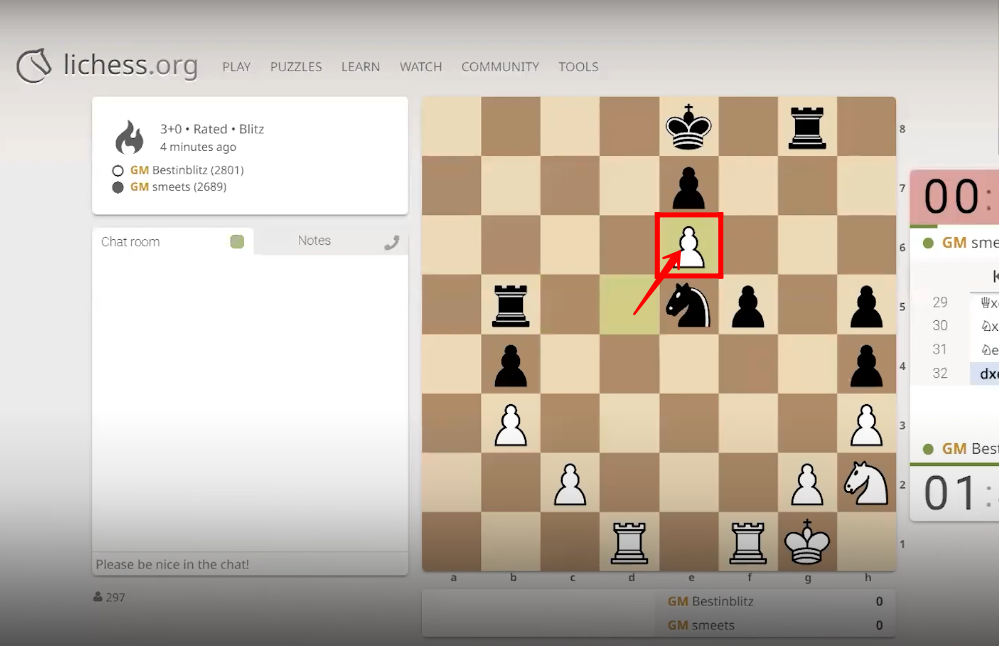
62. The black hook is shifted vertically from “g8” to “g6” square.
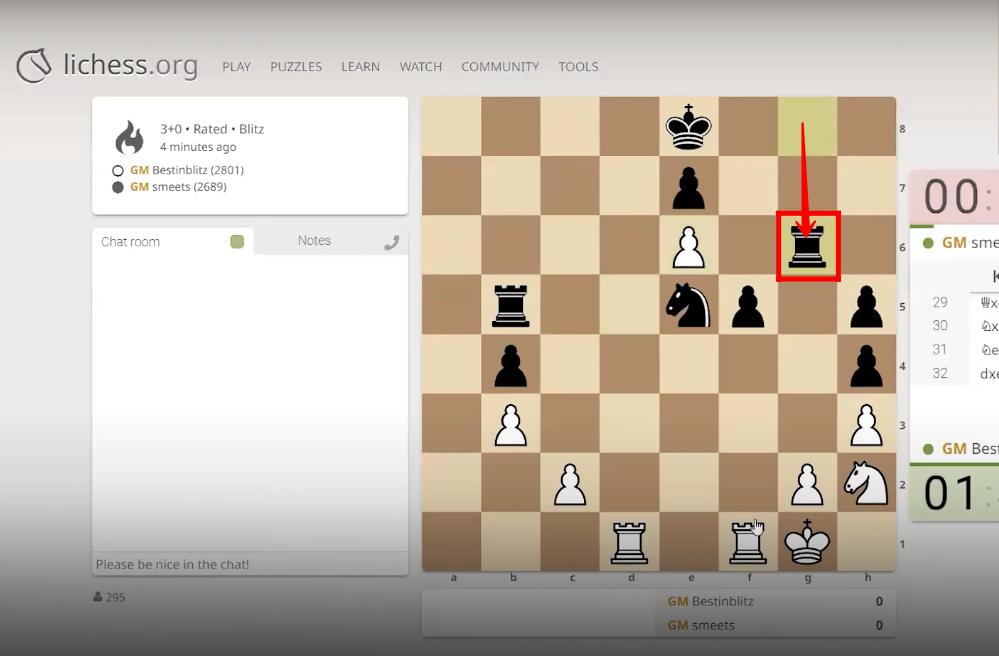
63. The white hook is repositioned vertically from “f1” to “f5” square and captures the black pawn.
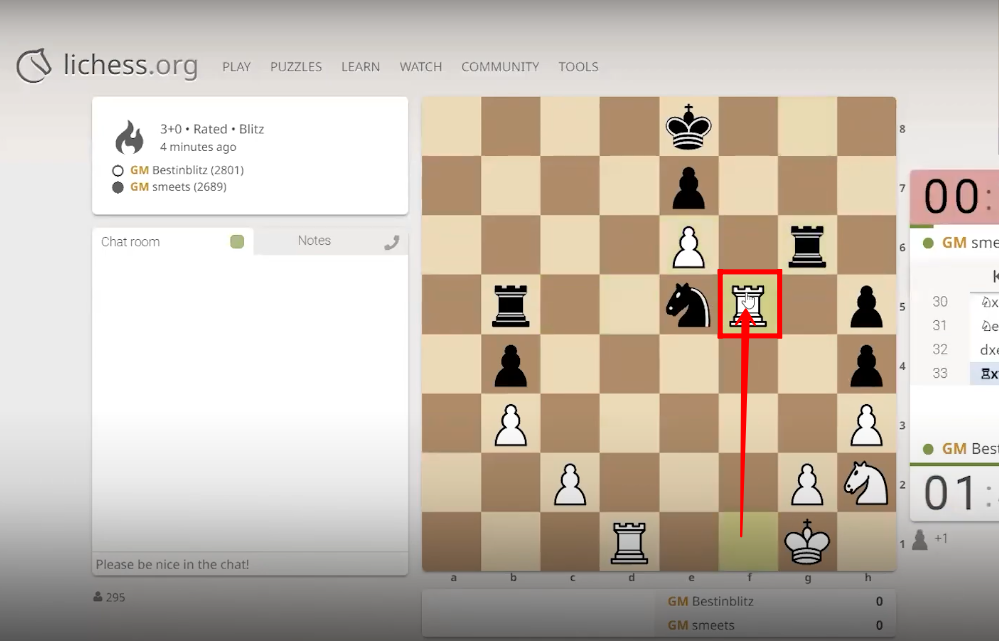
64. The black hook is relocated horizontally from “g6” to “e6” square and captures the white pawn.
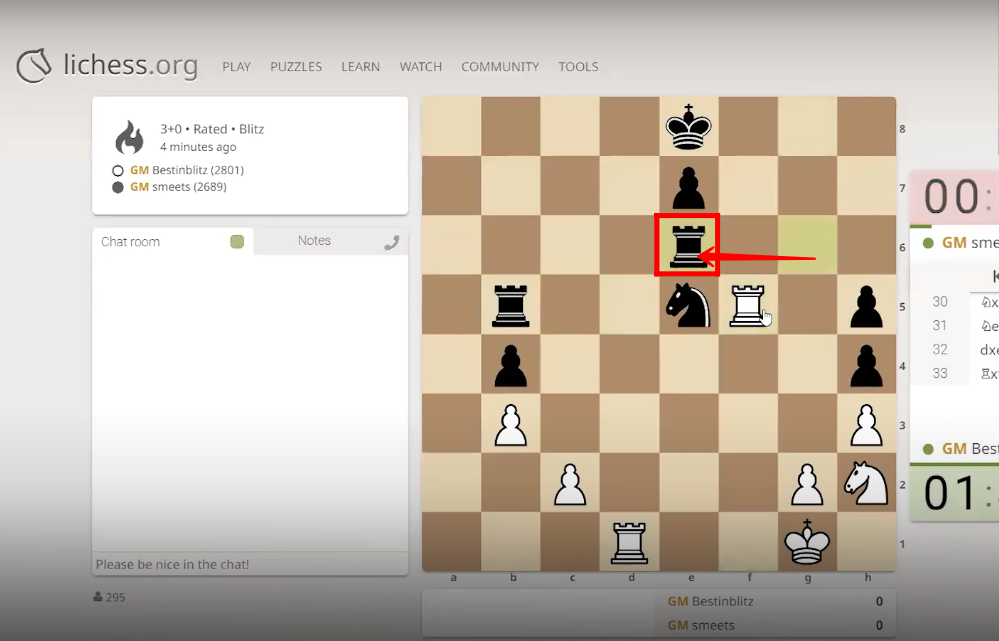
65. The white hook is moved vertically from “d1” to “d4” square.

66. The black hook is displaced horizontally from “b5” to “c5” square.

67. The white hook is displaced horizontally from “d4” to “e4” square.
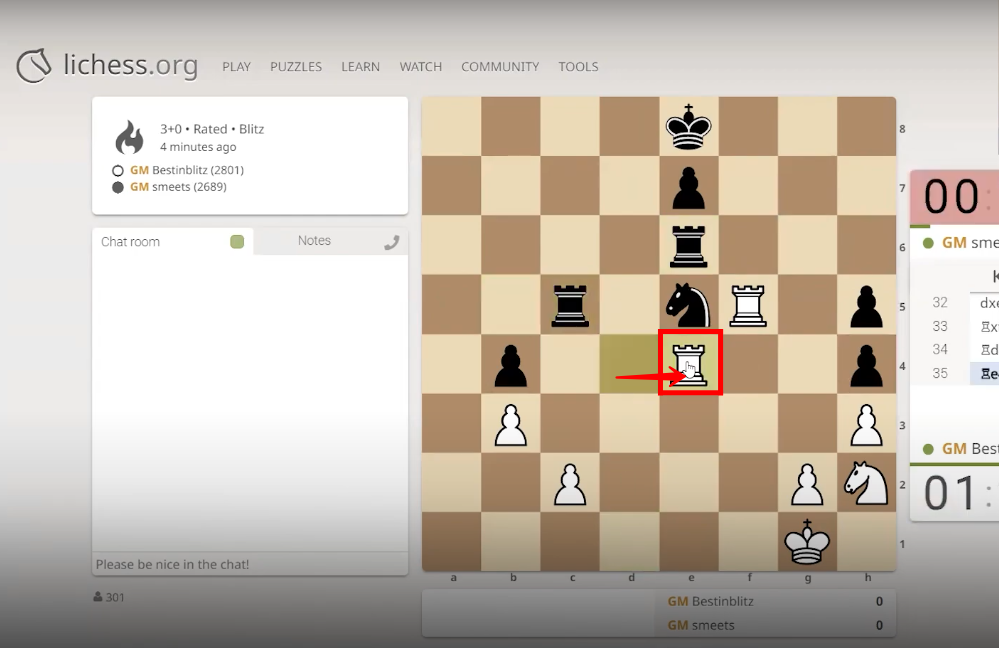
68. The black knight is shifted from “e5” to “d7” square in “L” shape.
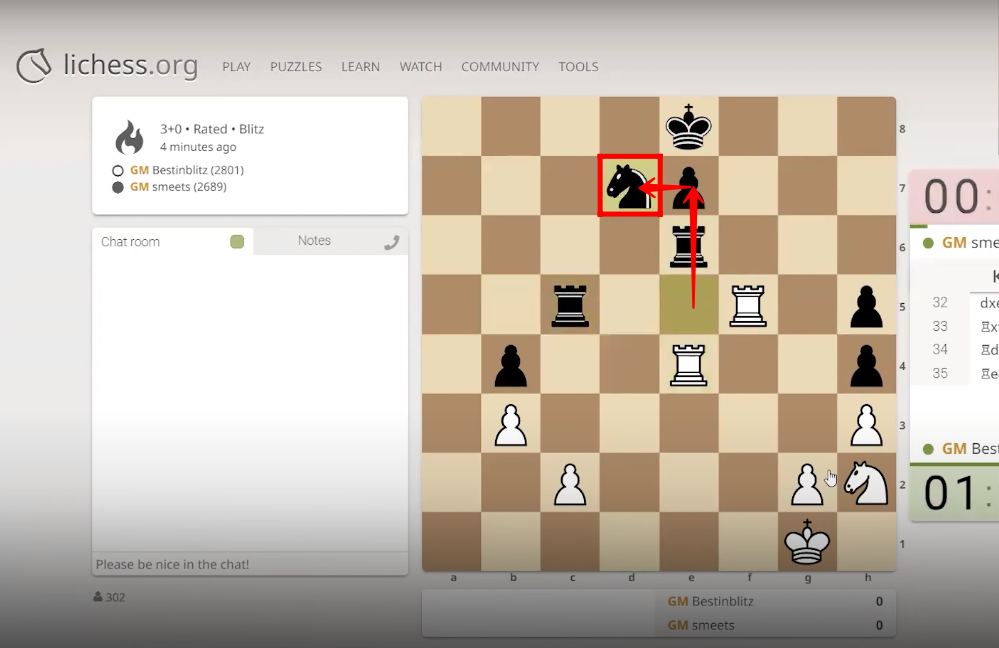
69. The white hook is repositioned horizontally from “f5” to “c5” square and captures the black hook.

70. The black knight is shifted in “L” shape from “d7” to “c5” square and captures the white hook.
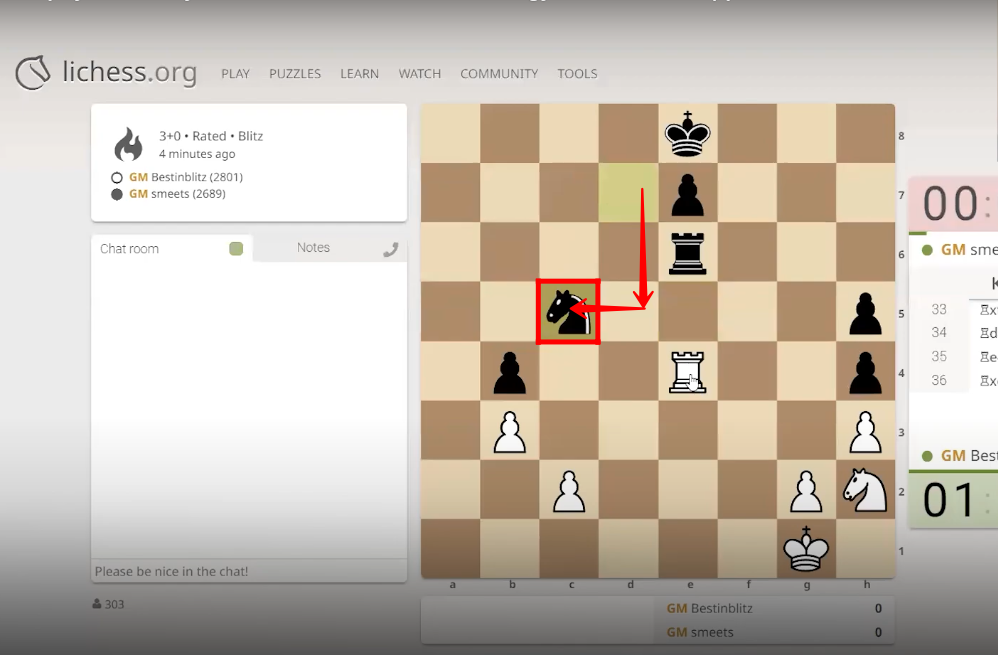
71. The white hook is moved horizontally from “e4” to “b4” square and captures the black pawn.
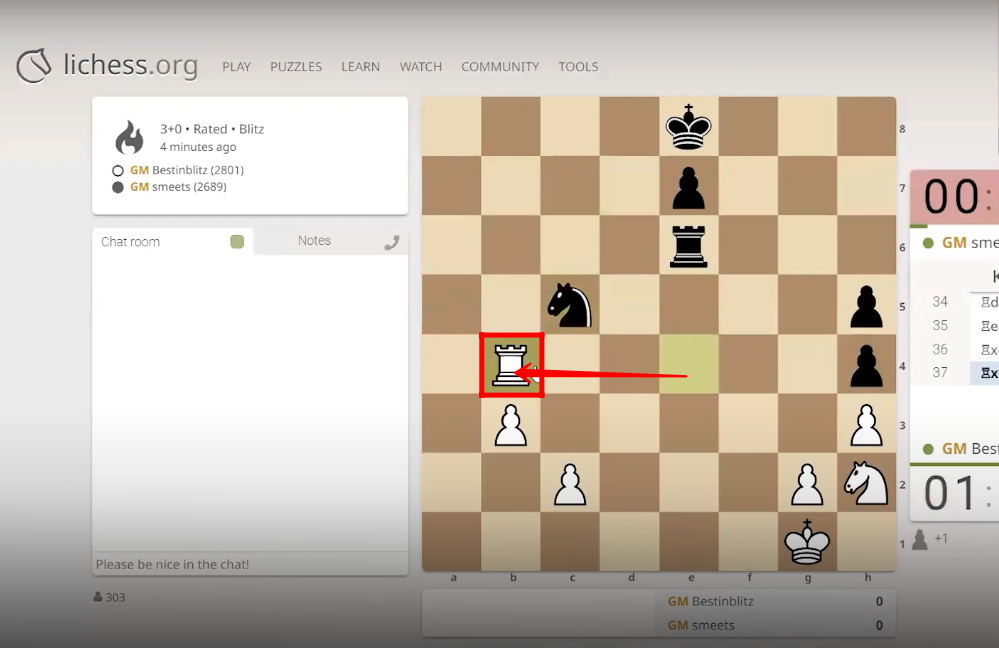
72. The black hook is repositioned vertically from “e6” to “e2” square.

73. The white knight is shifted in “L” shape from “h2” to “f3” square.
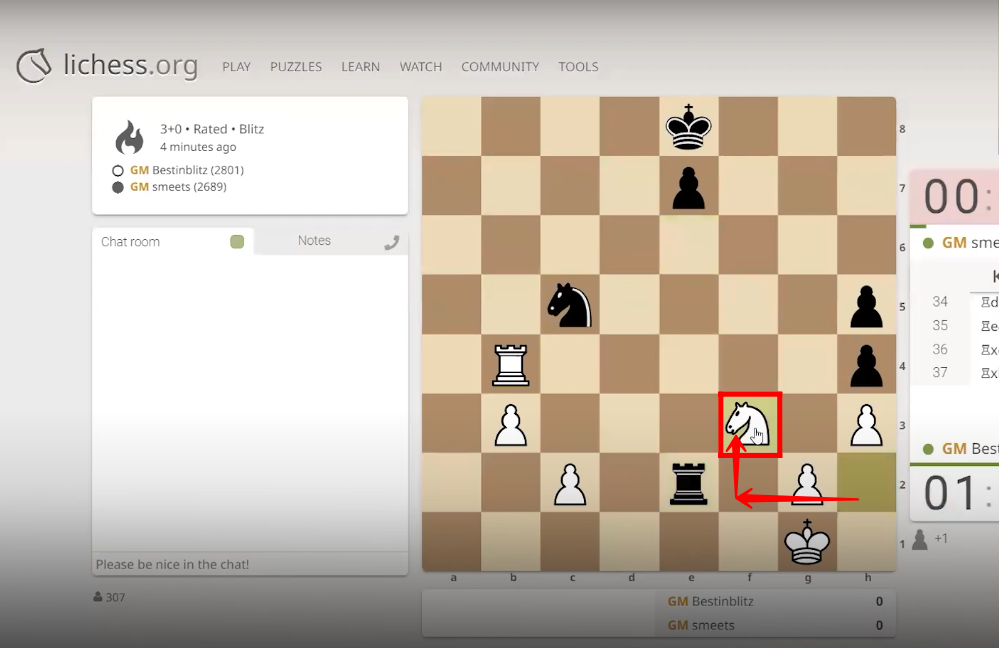
74. The black hook is moved horizontally from “e2” to “c2” square and captures the white pawn.
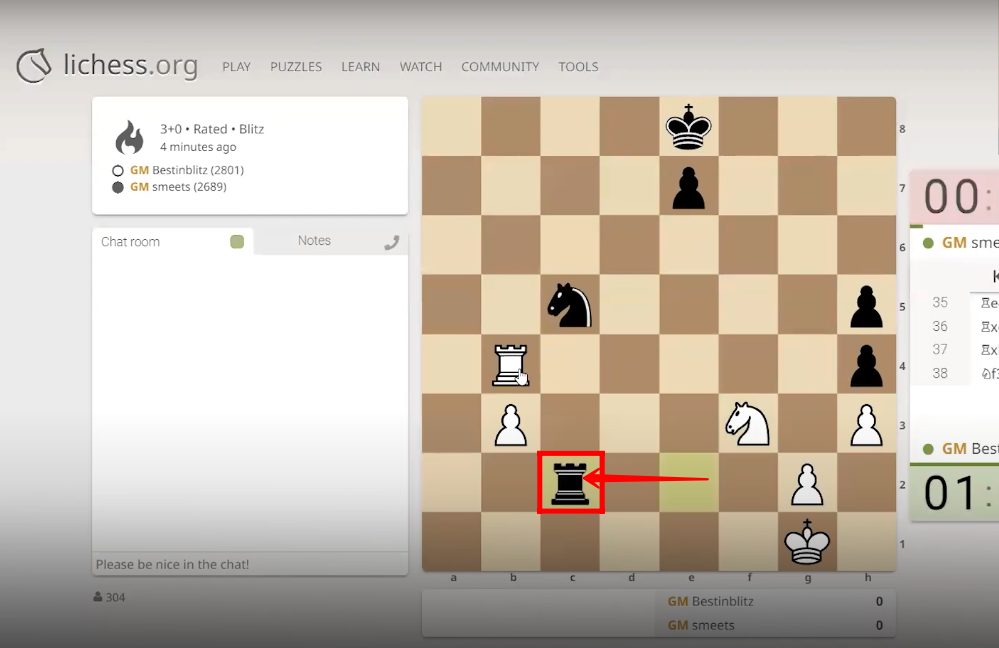
75. The white hook is displaced horizontally from “b4” to “c4” square.
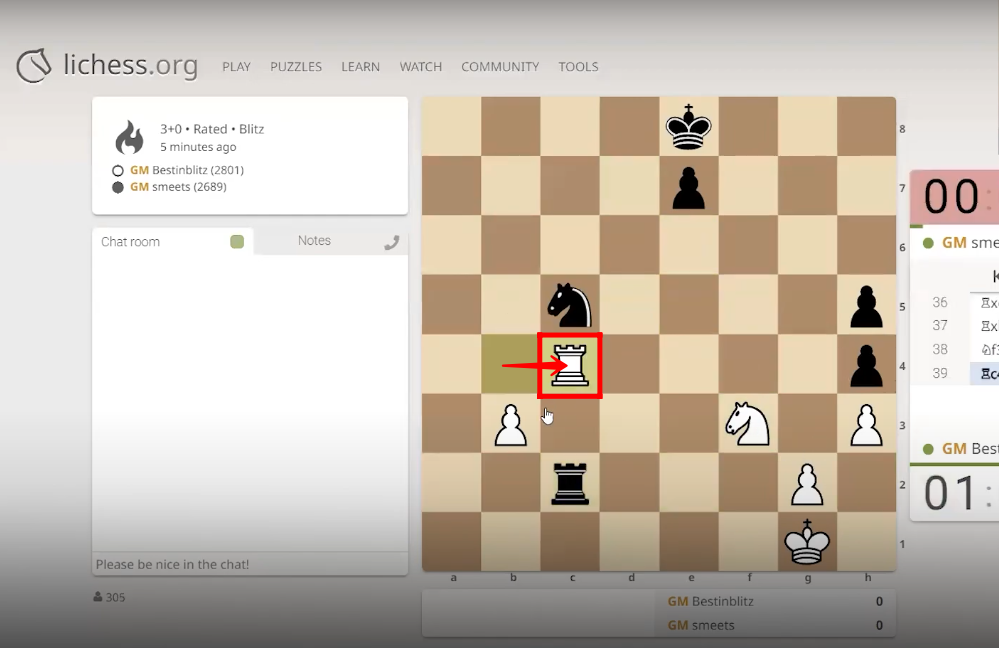
76. The black hook is moved vertically from “c2” to “c4” square and captures the white hook.
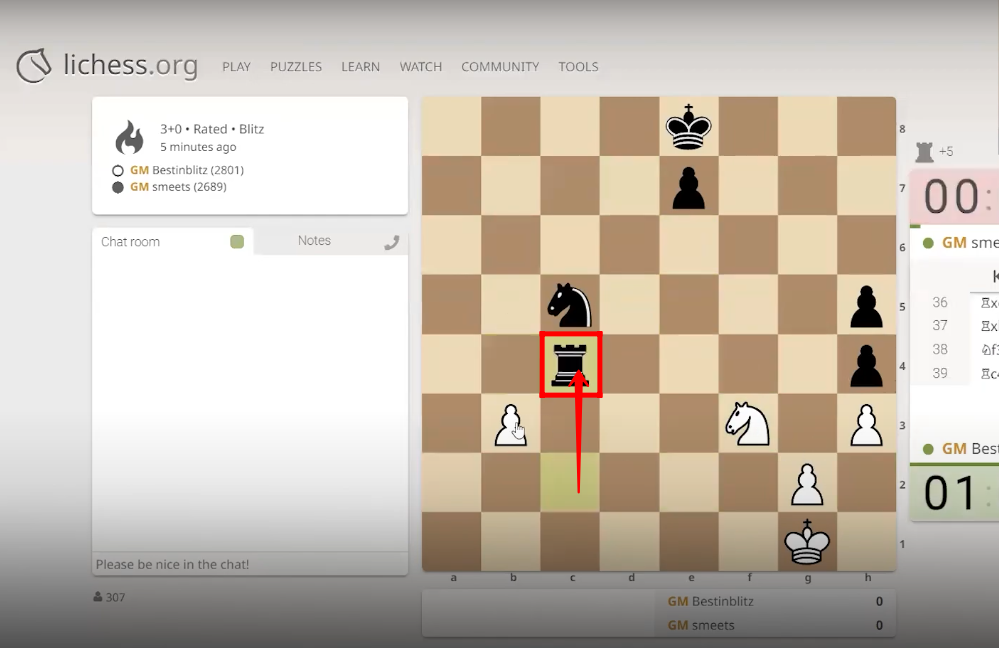
77. The white pawn is repositioned diagonally from “b3” to “c4” square and captures the black hook.
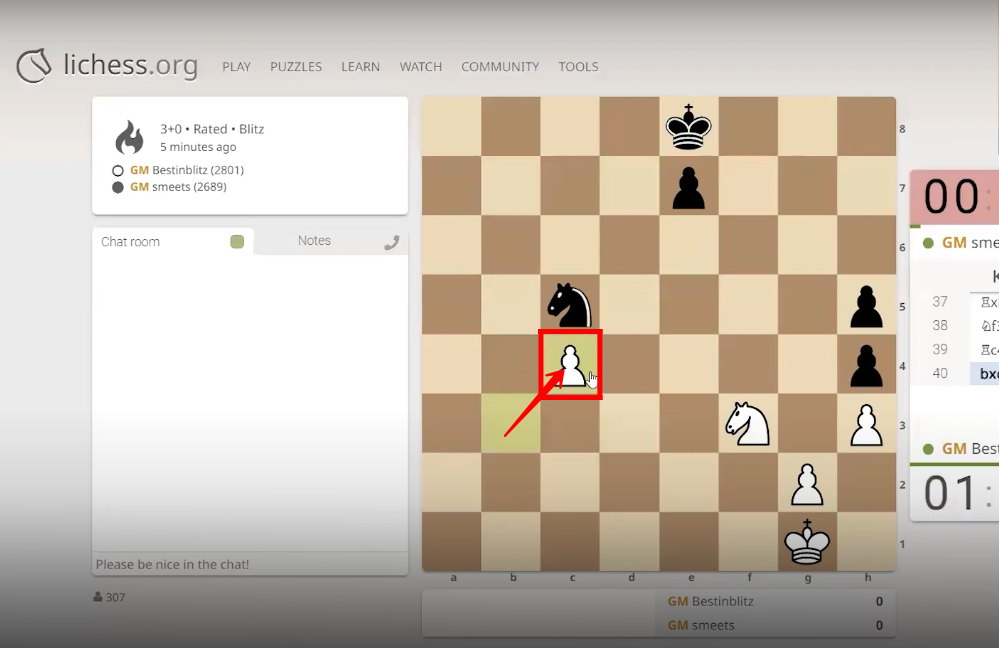
78. The black king is moved diagonally from “e8” to “d7” square.
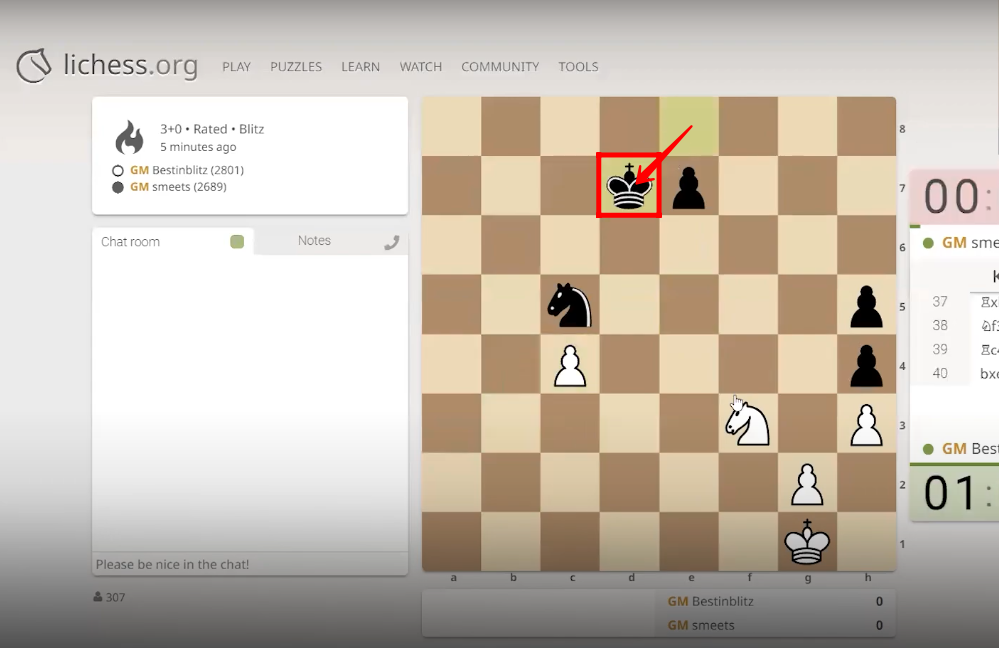
79. The white knight is relocated in “L” shape from “f3” to “h4” square and captures the black pawn.
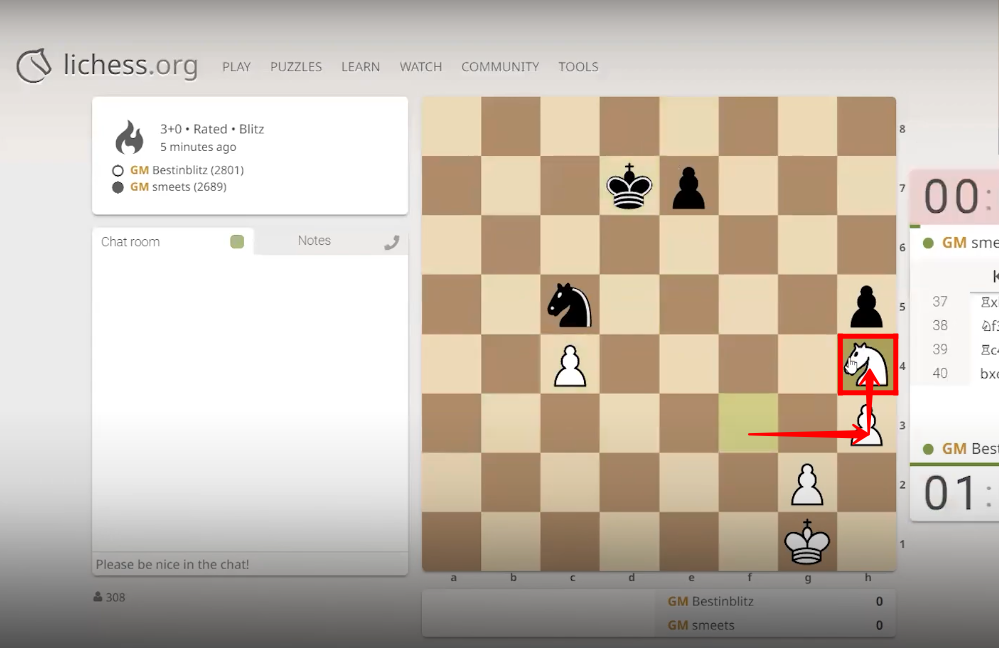
80. The black knight is shifted from “c5” to “e4” square in “L” shape.
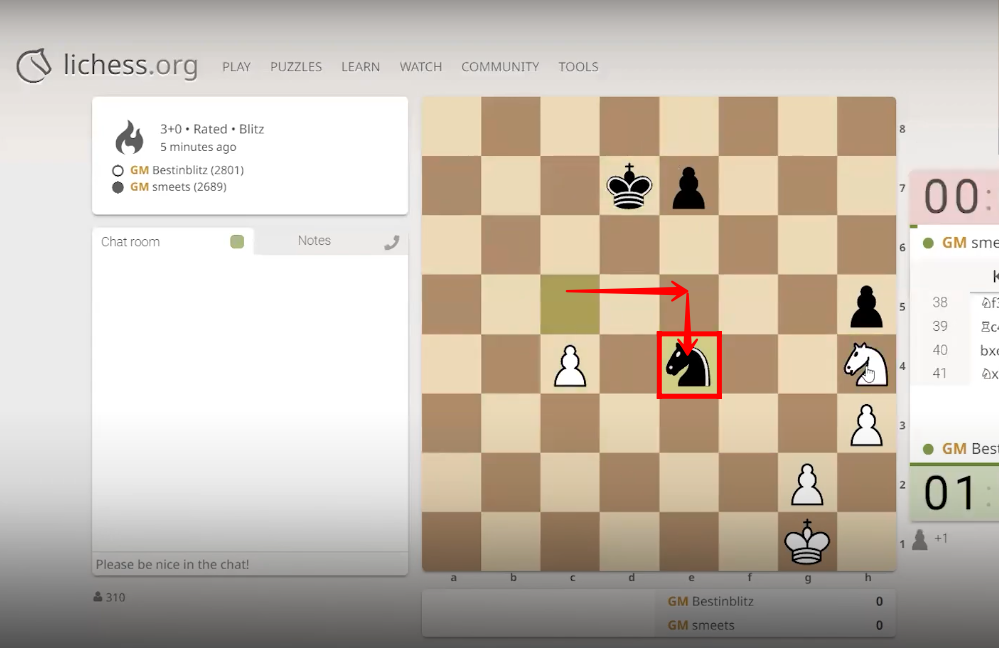
81. The white knight is moved from “h4” to “f5” square in “L” shape.
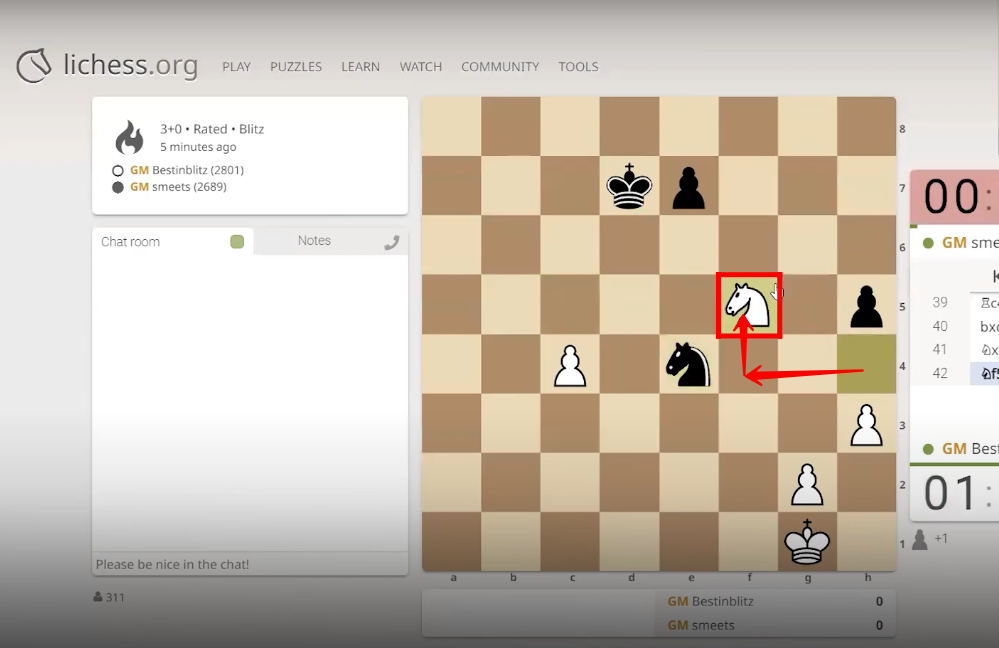
82. The black king is moved diagonally from “d7” to “e6” square.
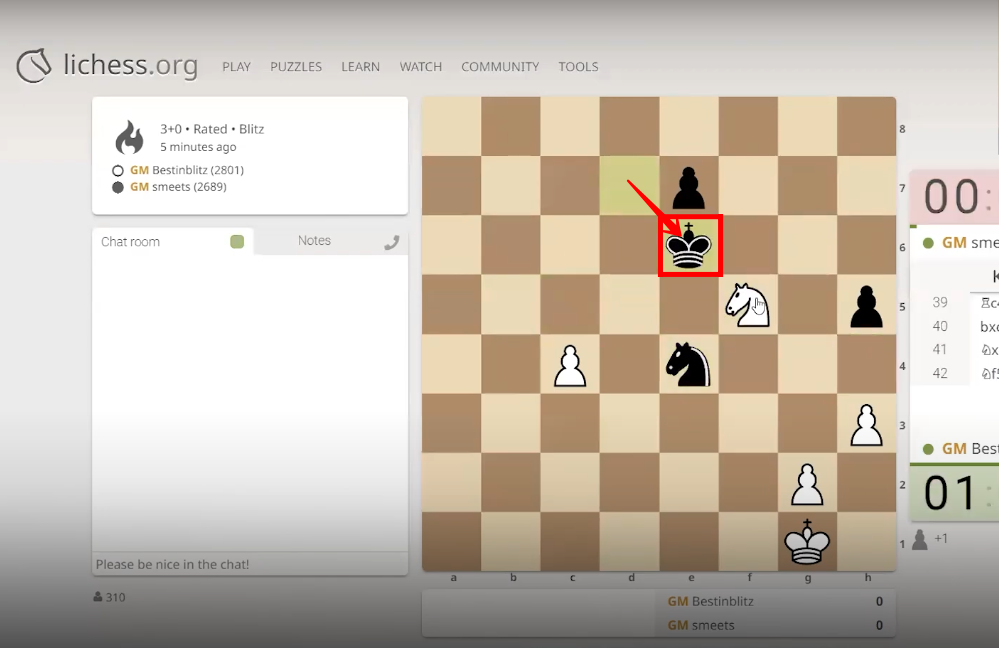
83. The white knight is displaced from “f5” to “g7” square in “L” shape.

84. The black king is repositioned from “e6” to “e5” square.
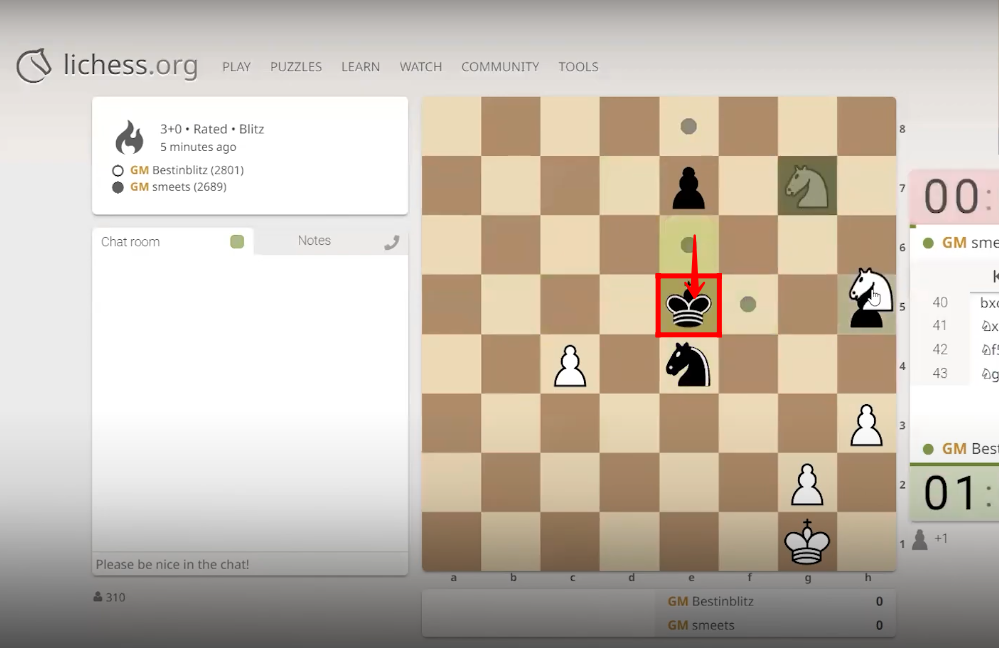
85. The white knight is displaced from “g7” to “h5” square in “L” shape and captures the black pawn.

86. The black king is displaced from “e5” to “d4” square diagonally.
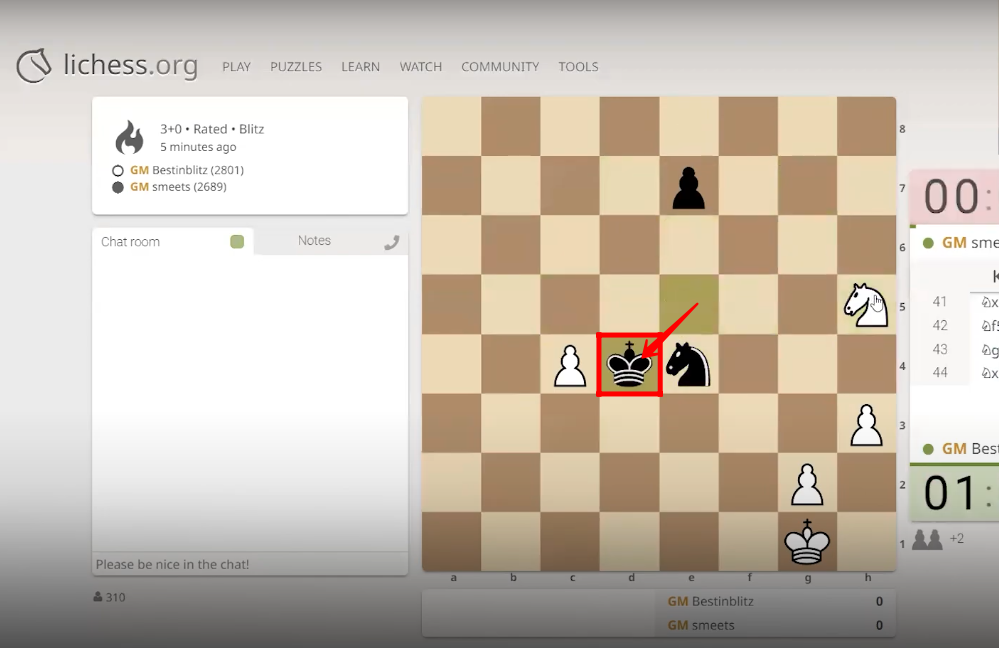
87. The white pawn is moved vertically forward from “g2” to “g4” square.
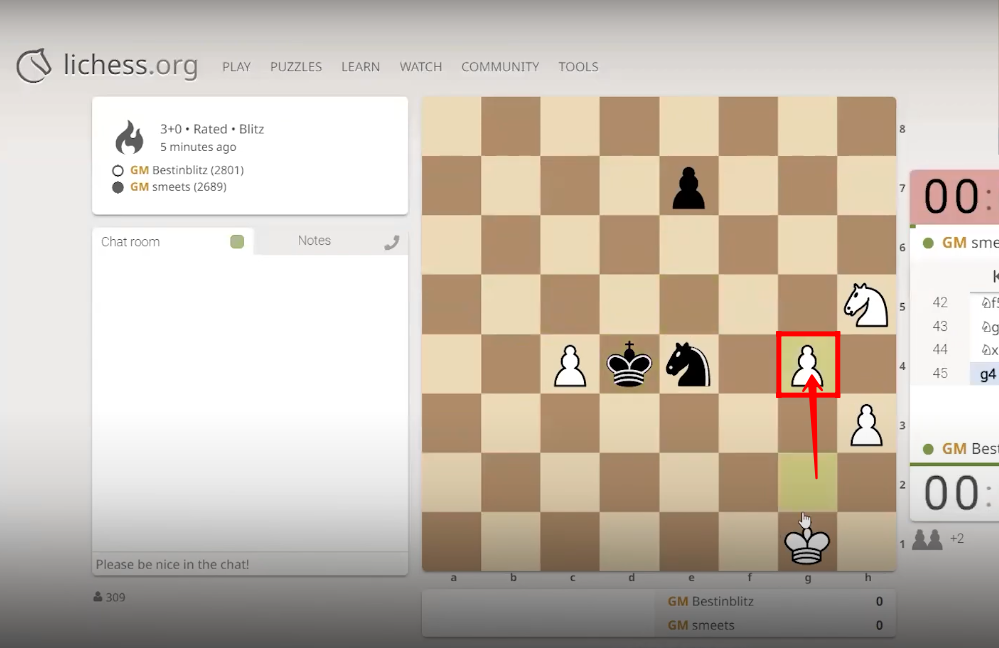
88. The black king is relocated from “d4” to “c4” square and captures the white pawn.
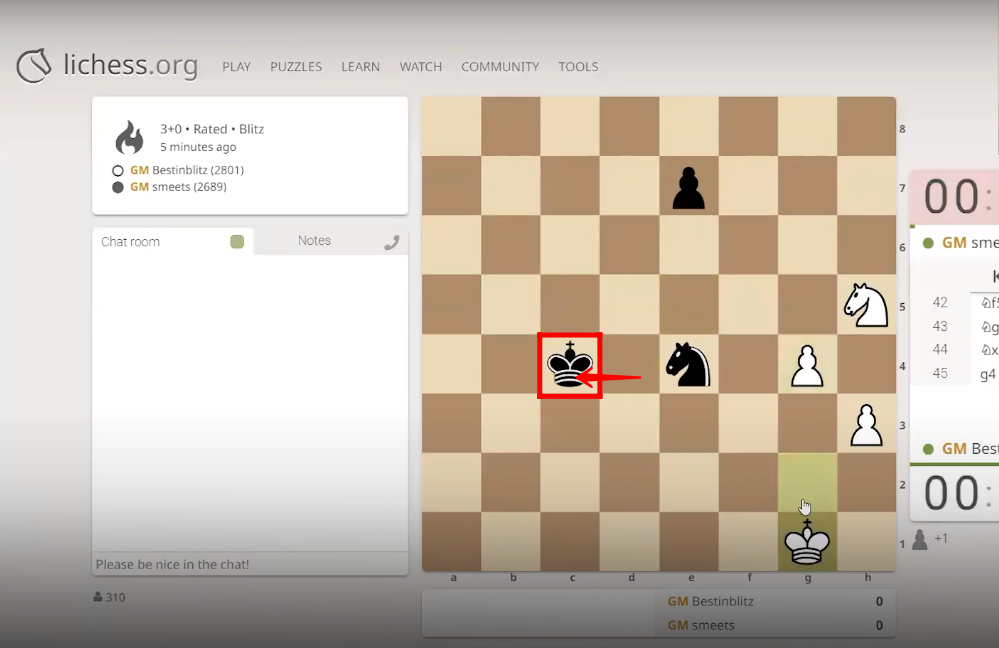
89. The white king is shifted from “g1” to “g2” square vertically.
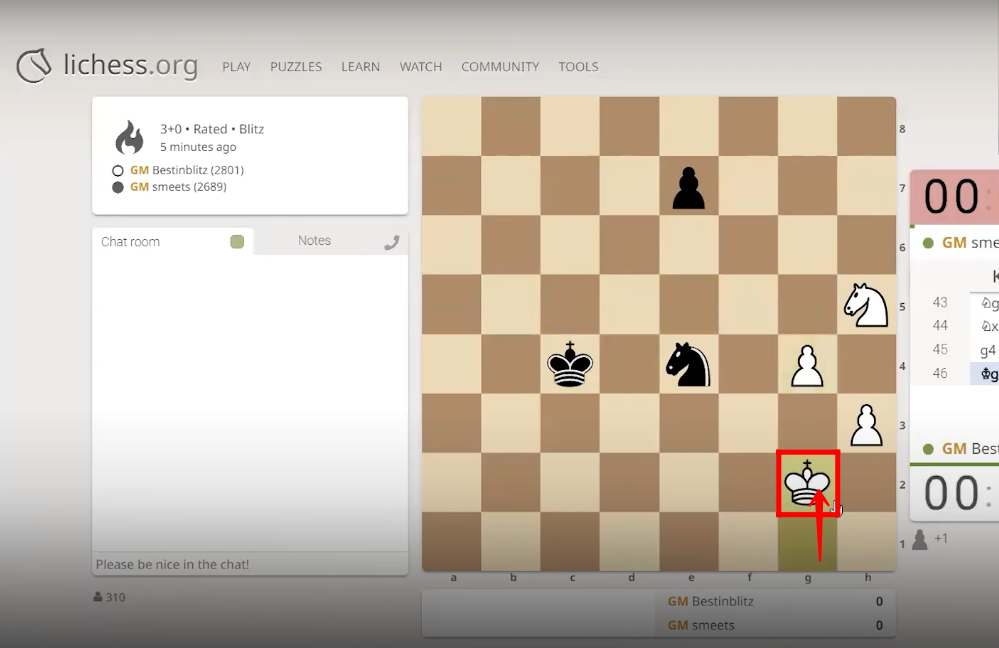
90. The black king is transferred from “c4” to “d5” square diagonally.
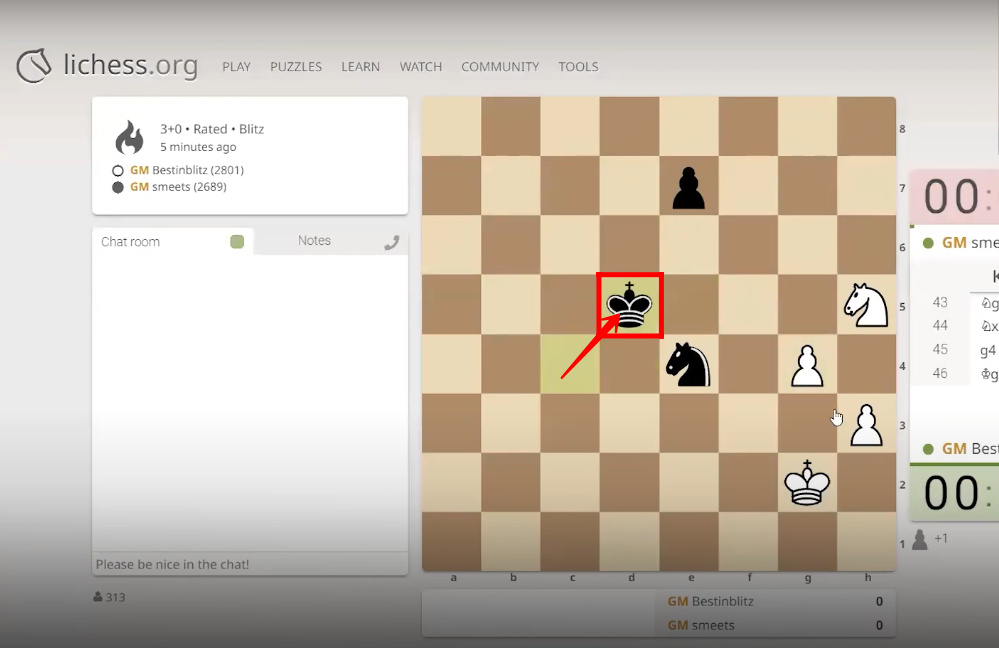
91. The white knight is relocated from “h5” to “g3” square in “L” shape.
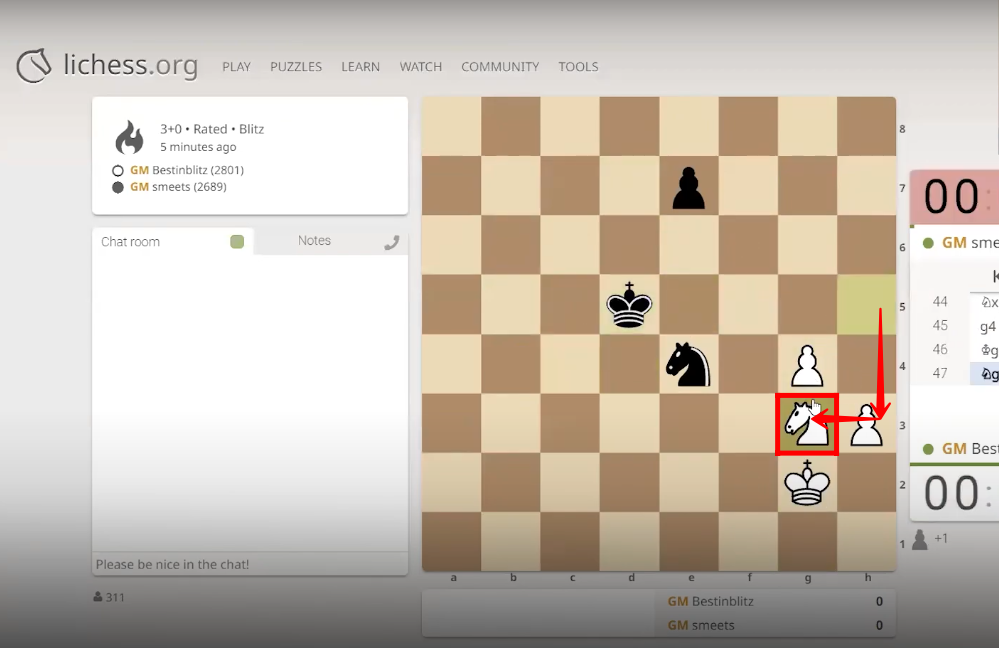
92. The black knight is repositioned from “e4” to “f6” square in “L” shape.

93. The white king is displaced from “g2” to “f3” square diagonally.

94. The black king is shifted from “d5” to “e5” square.
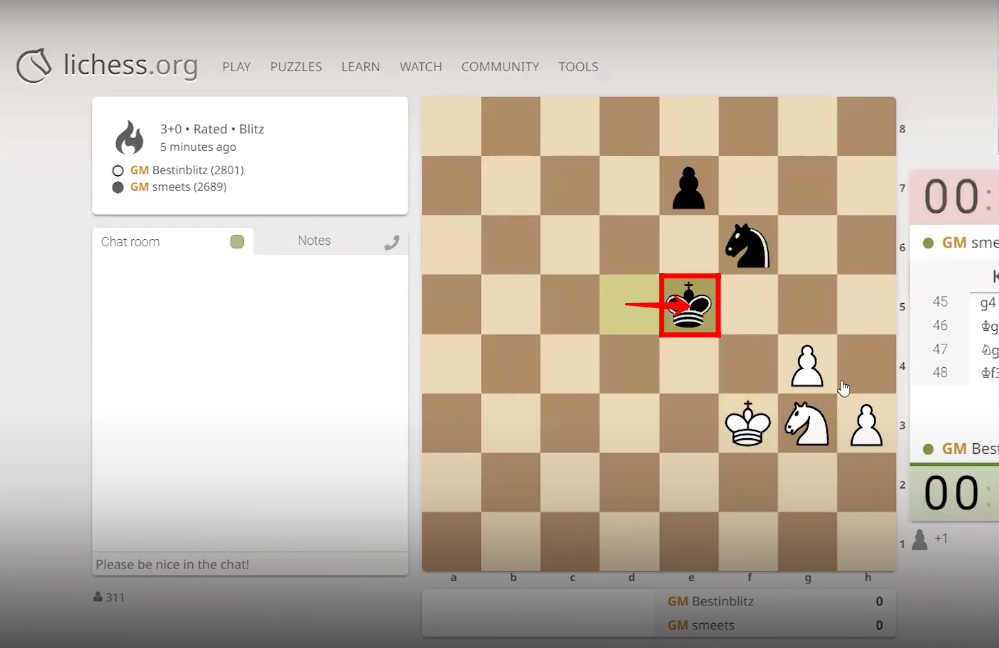
95. The white pawn is moved forward from “g4” to “g5” square.
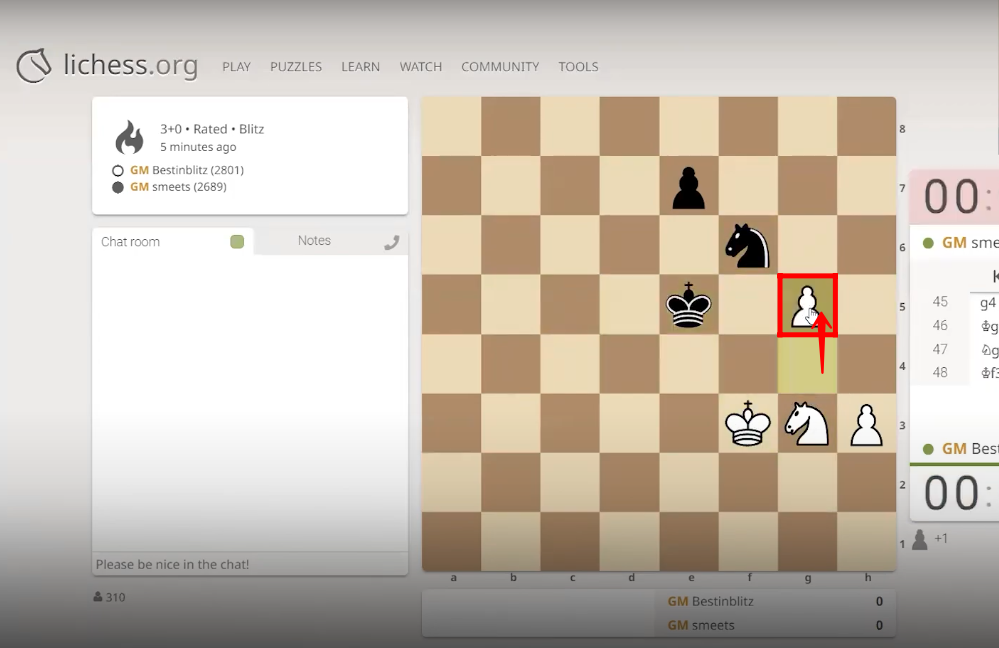
96. The black knight is repositioned from “f6” to “d5” square in “L” shape.
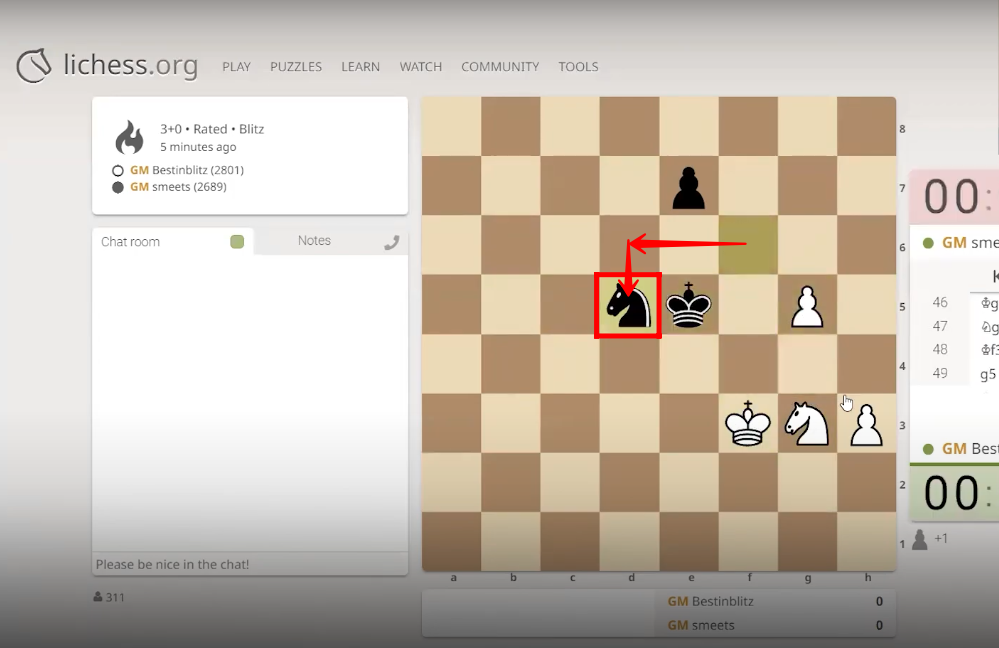
97. The white pawn is shifted forward from “h3” to “h4” square. The time ended for the player “2800(the black pieces player)” and “Max Dlugy(the white pieces player)” is the winner of the game.

“You can also watch this video on Youtube”









